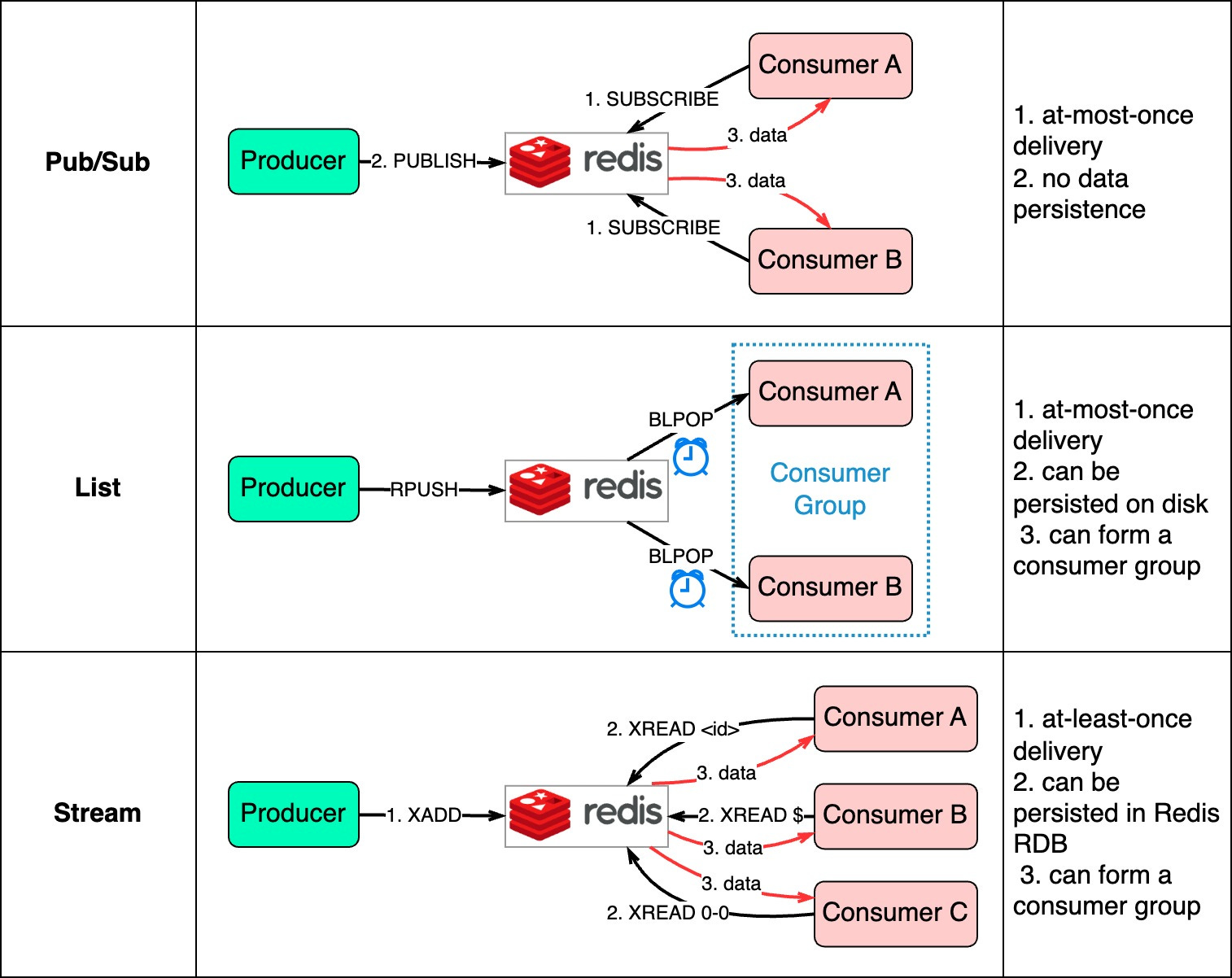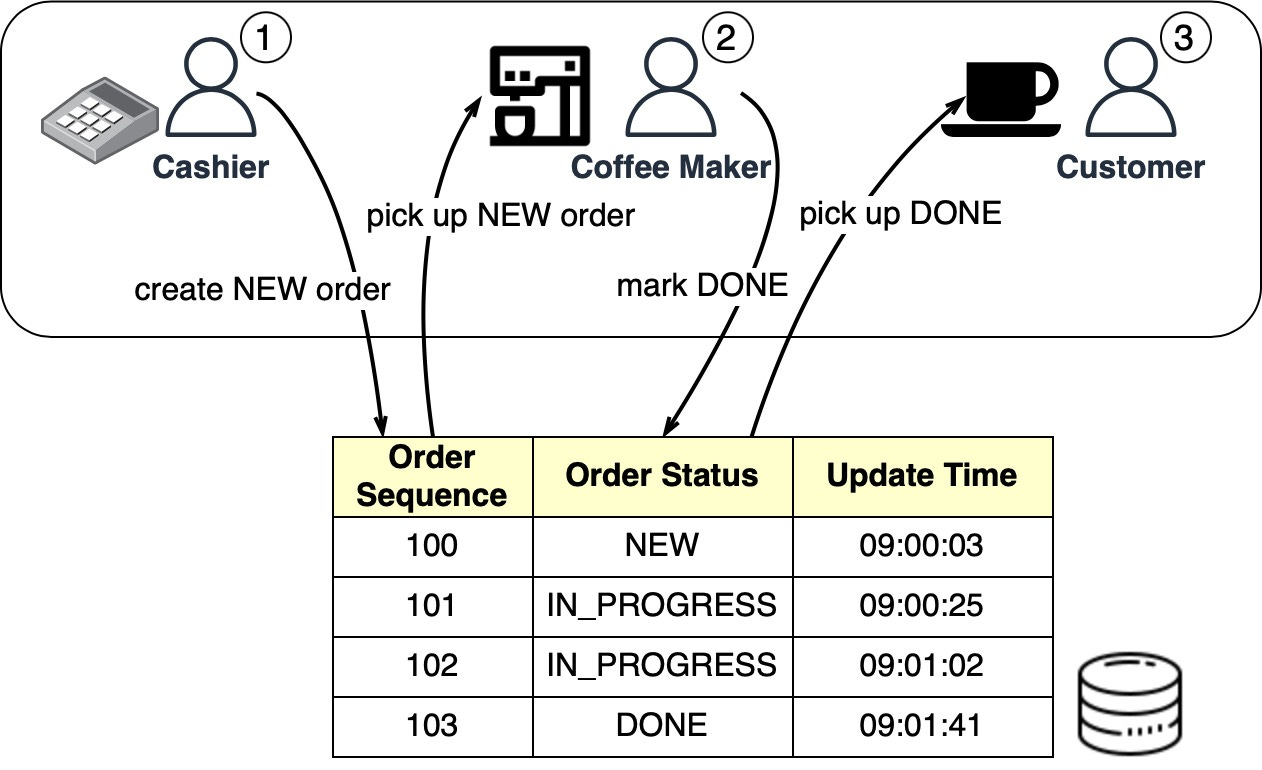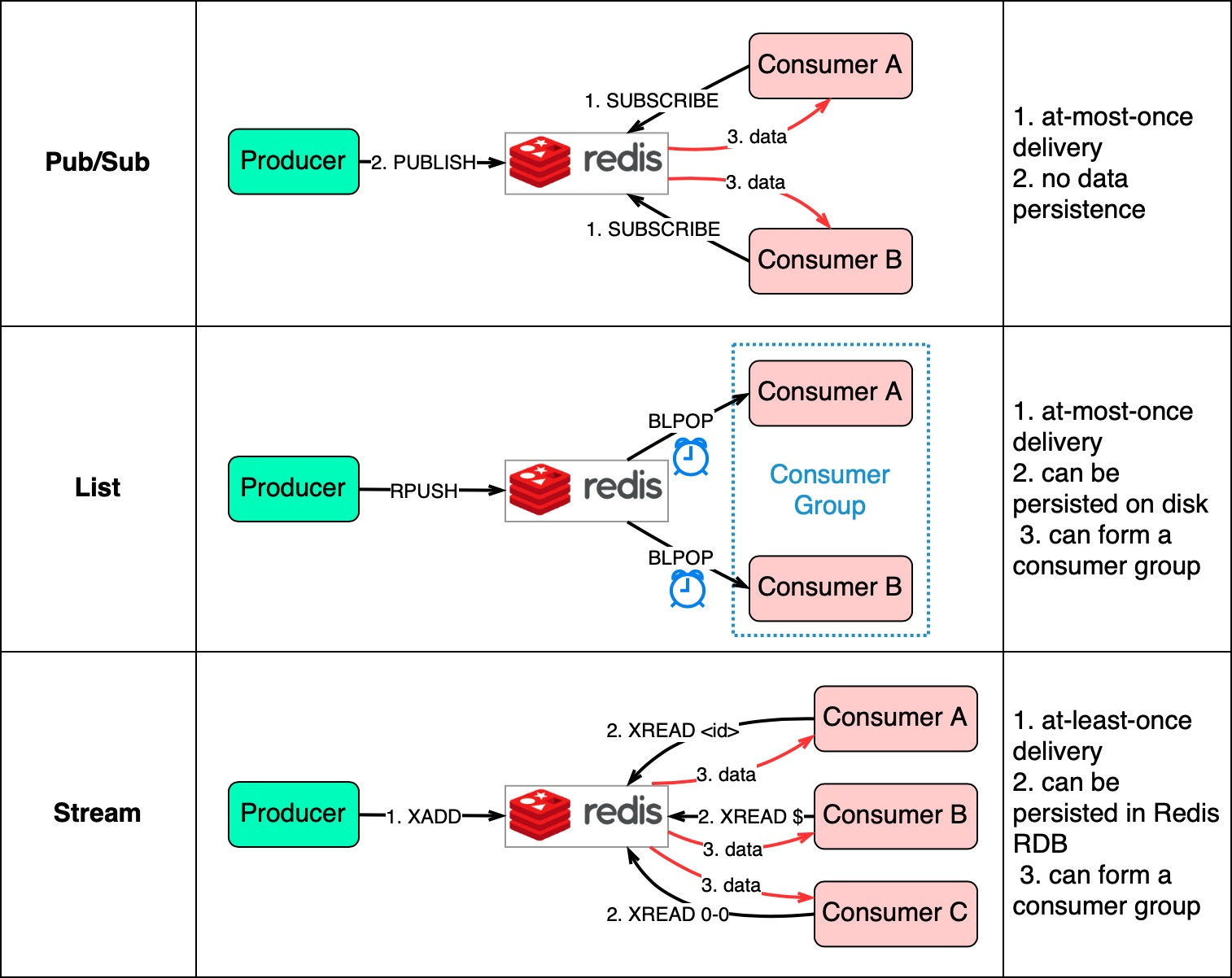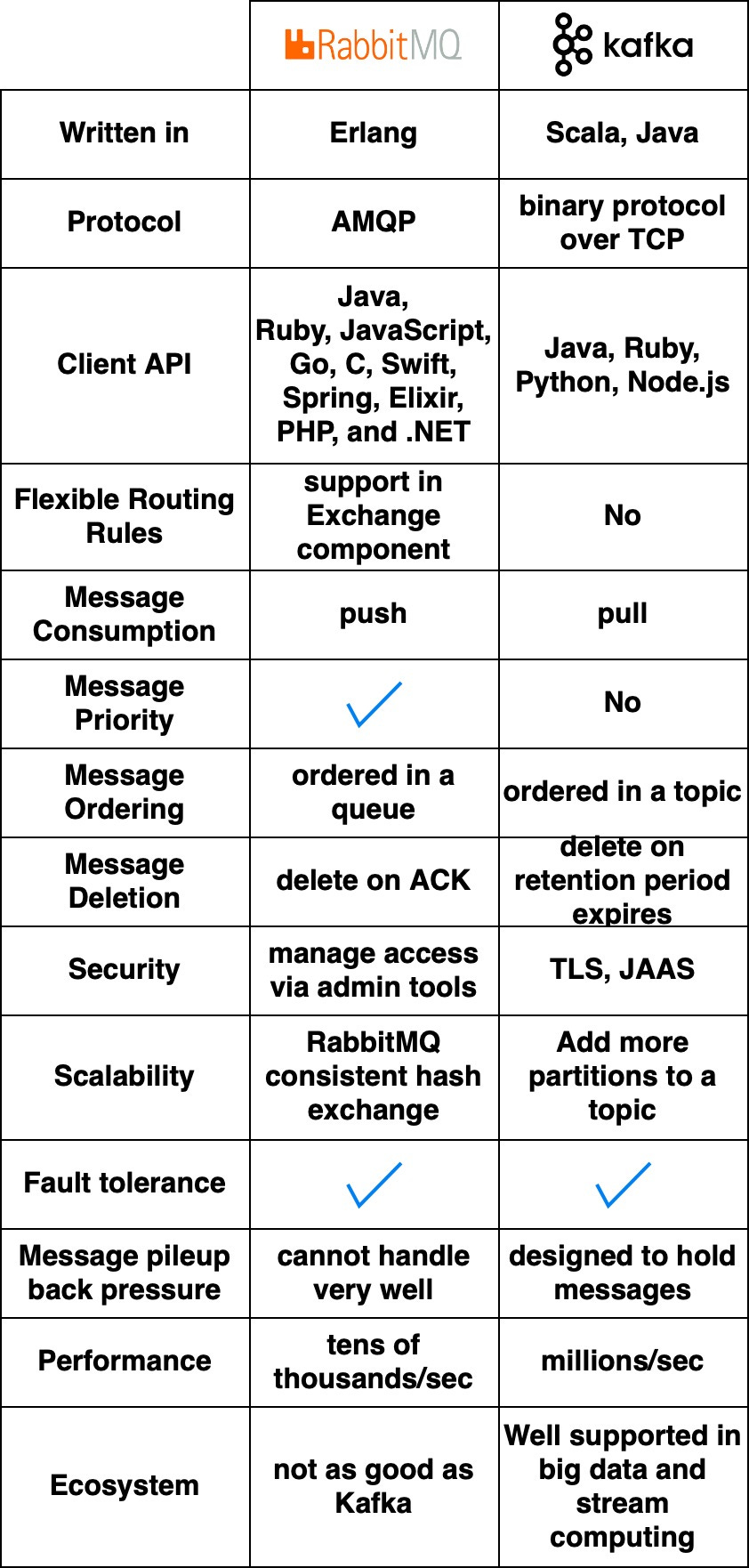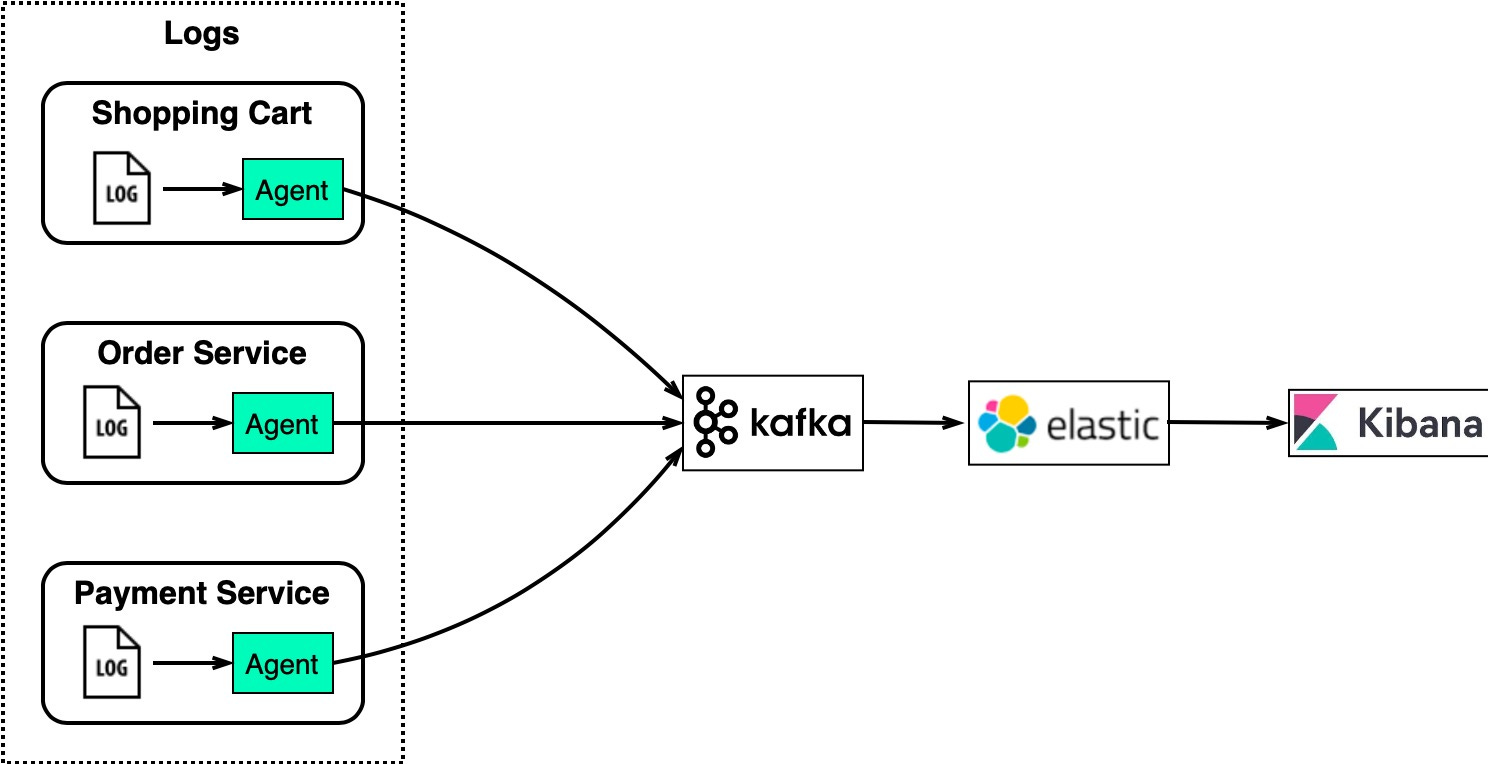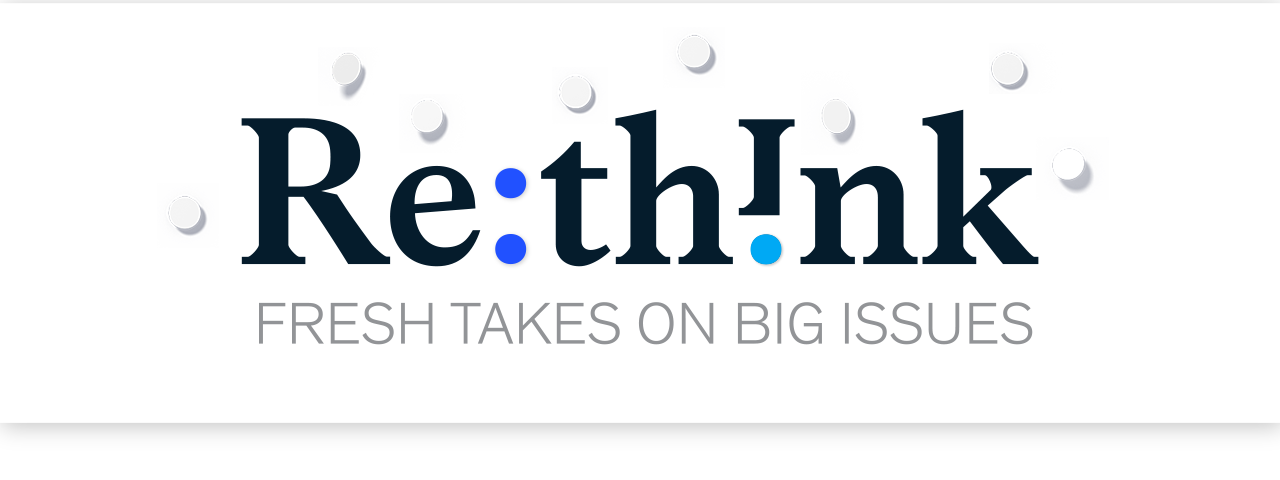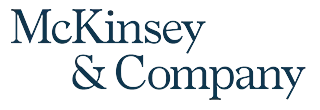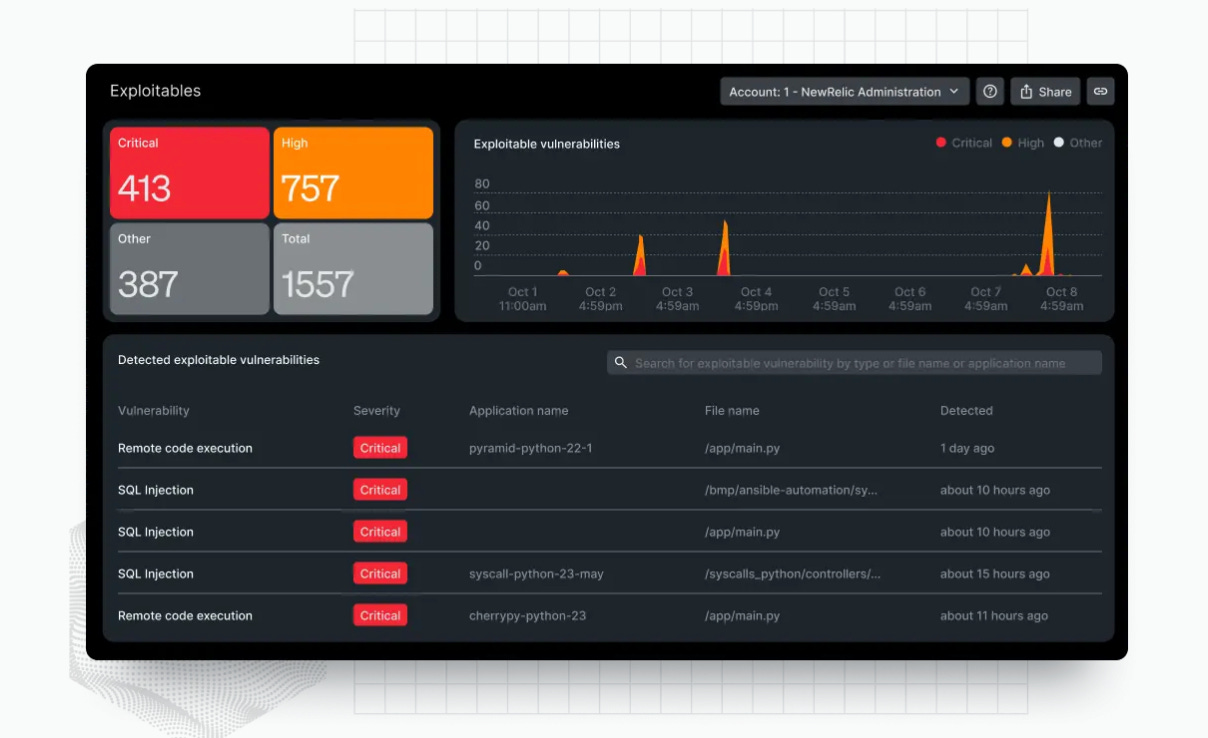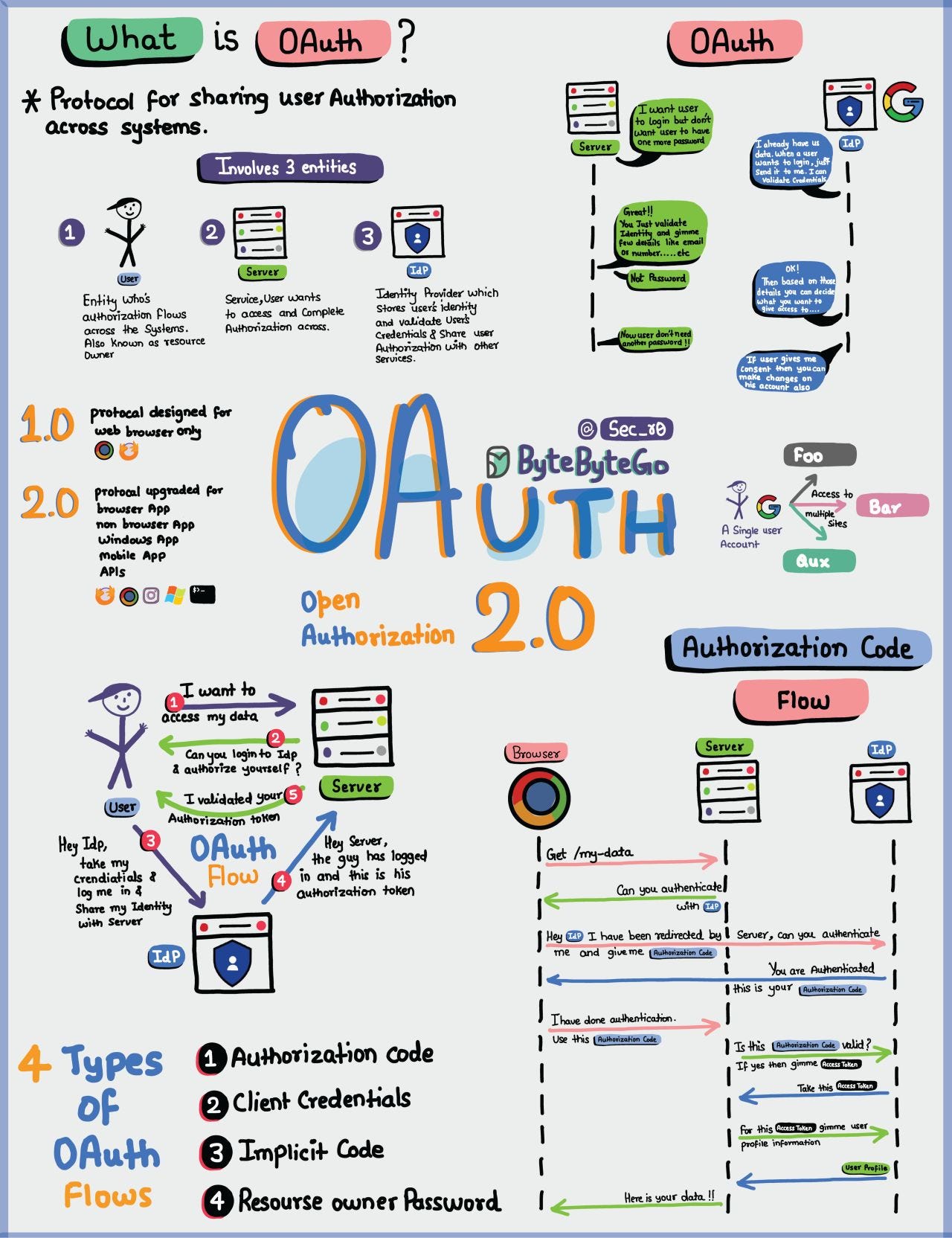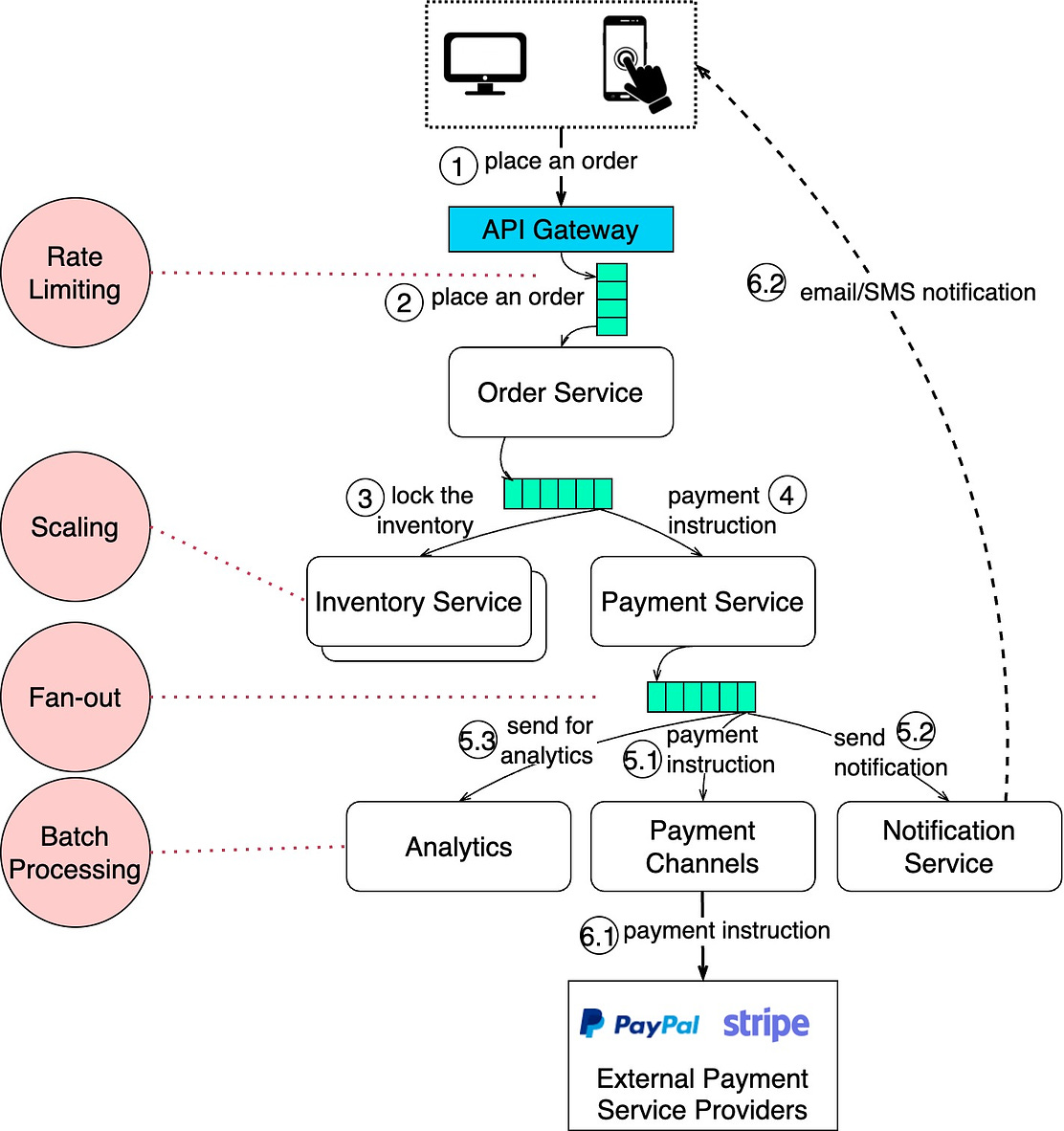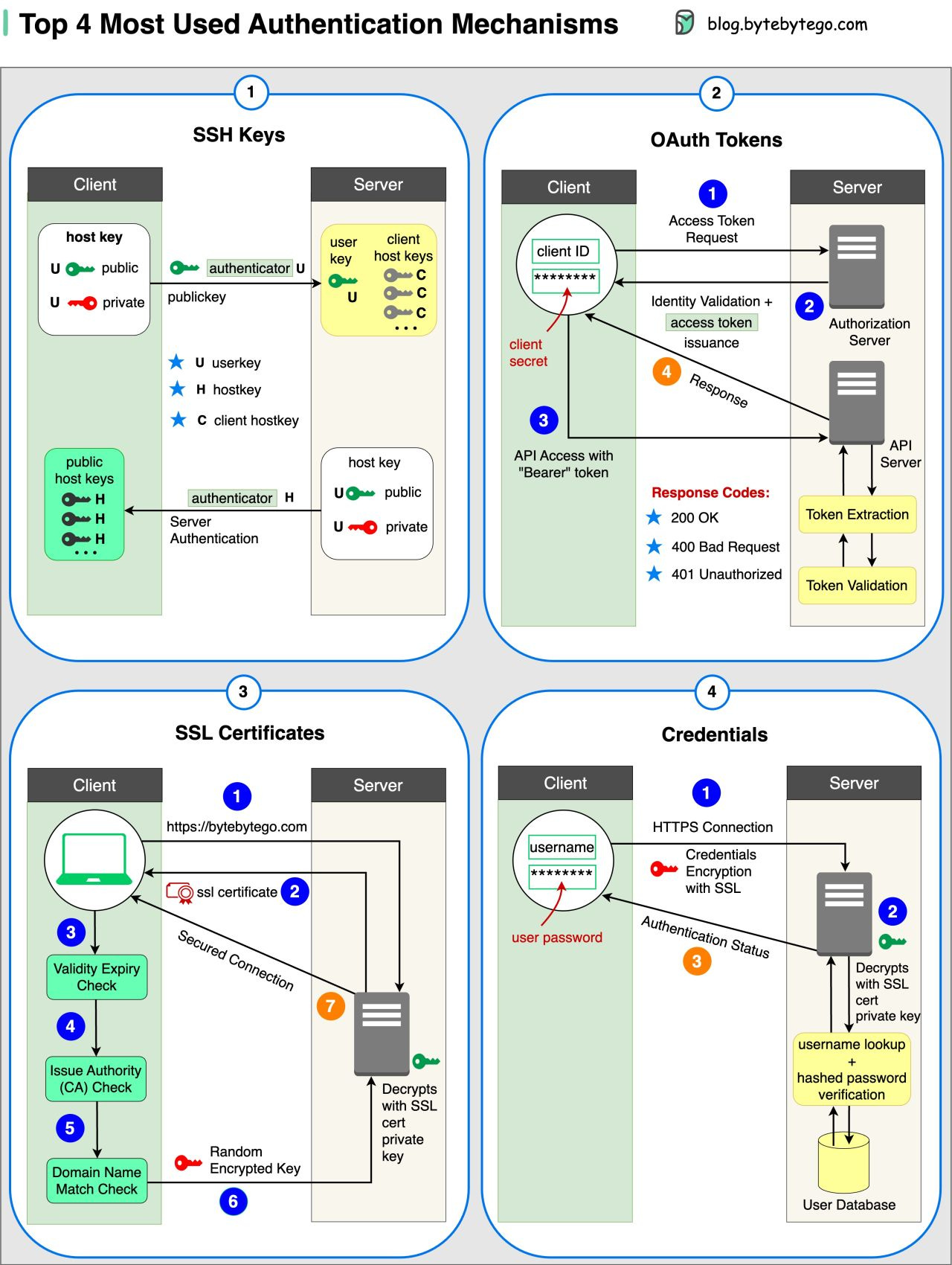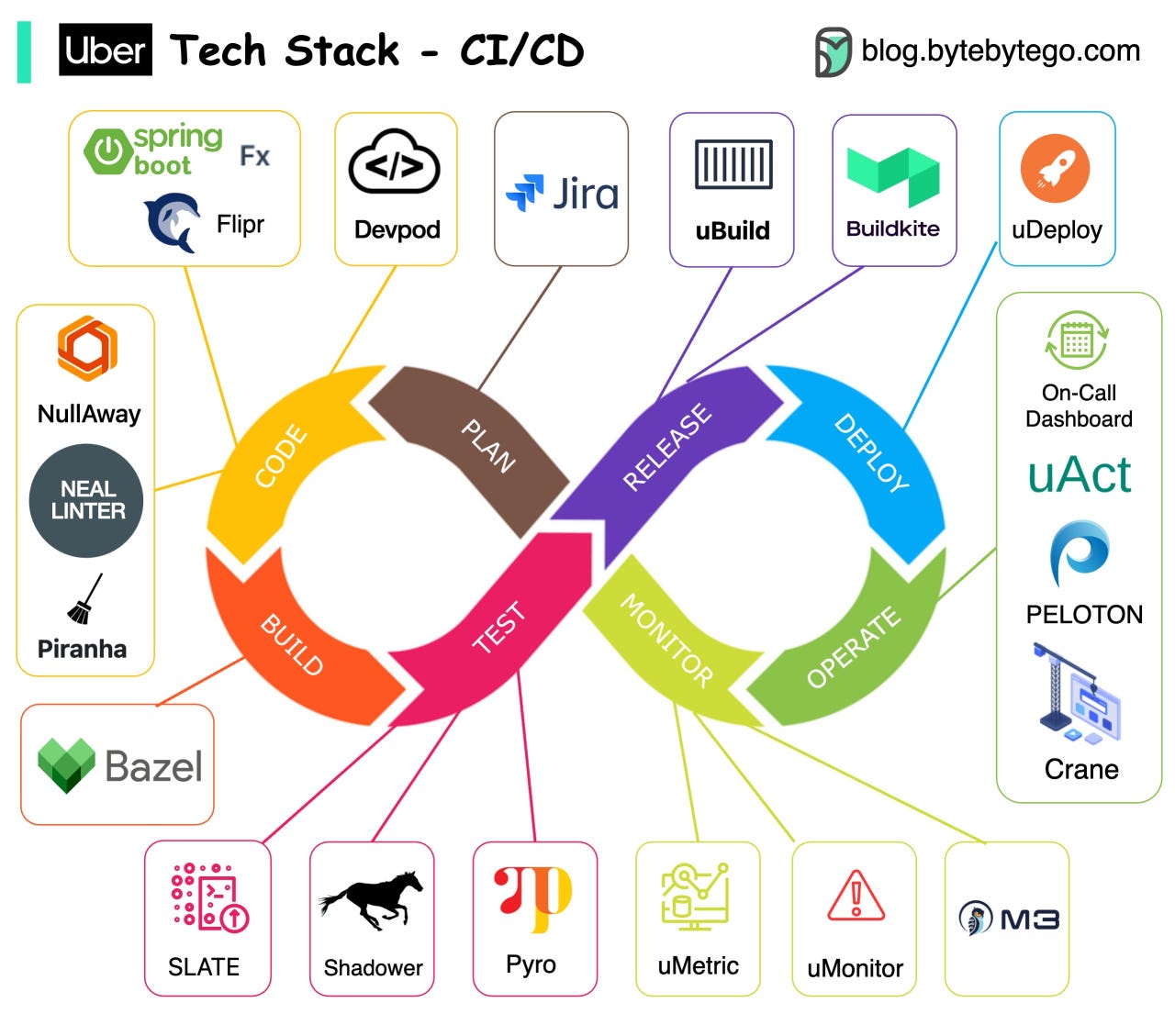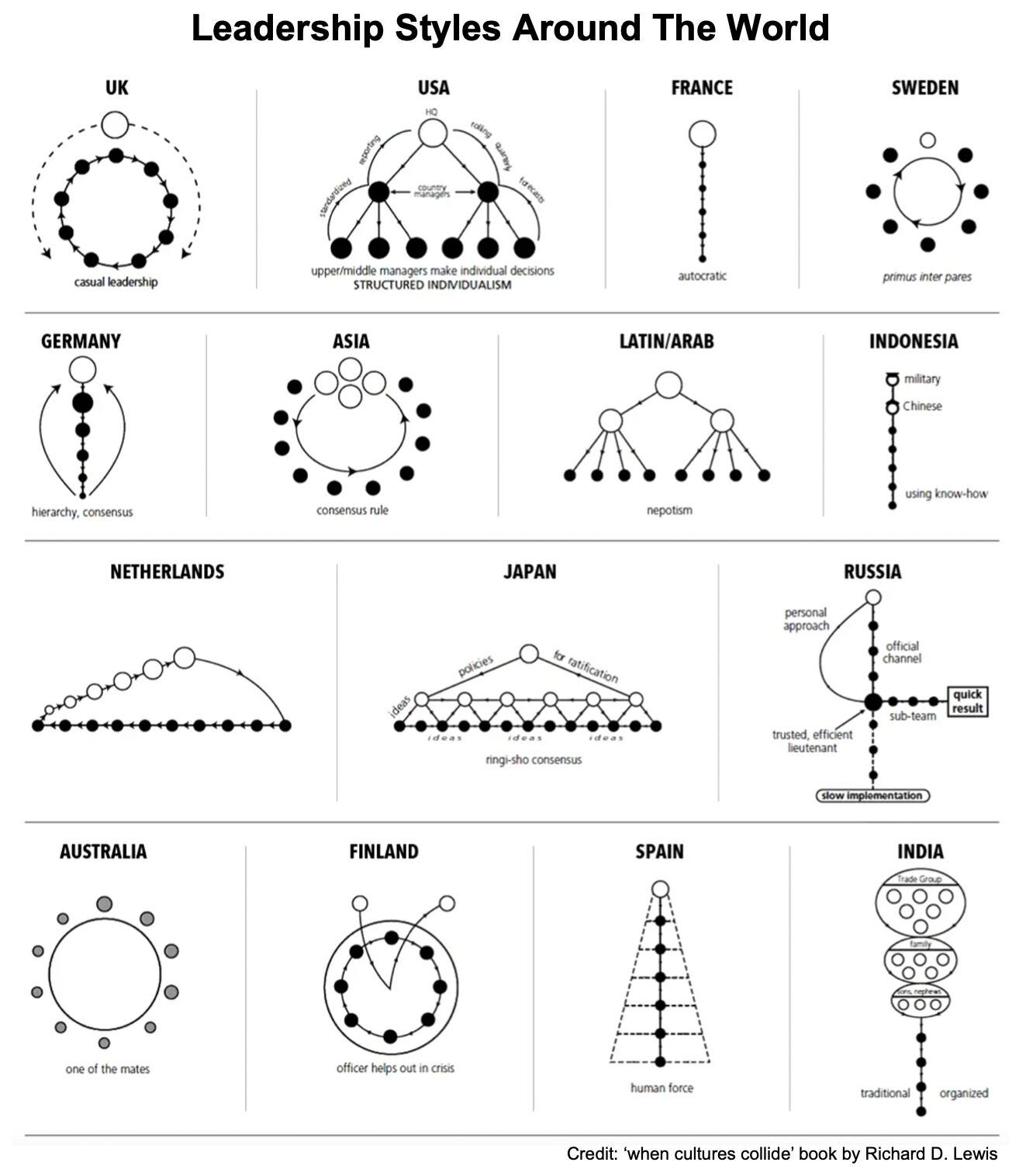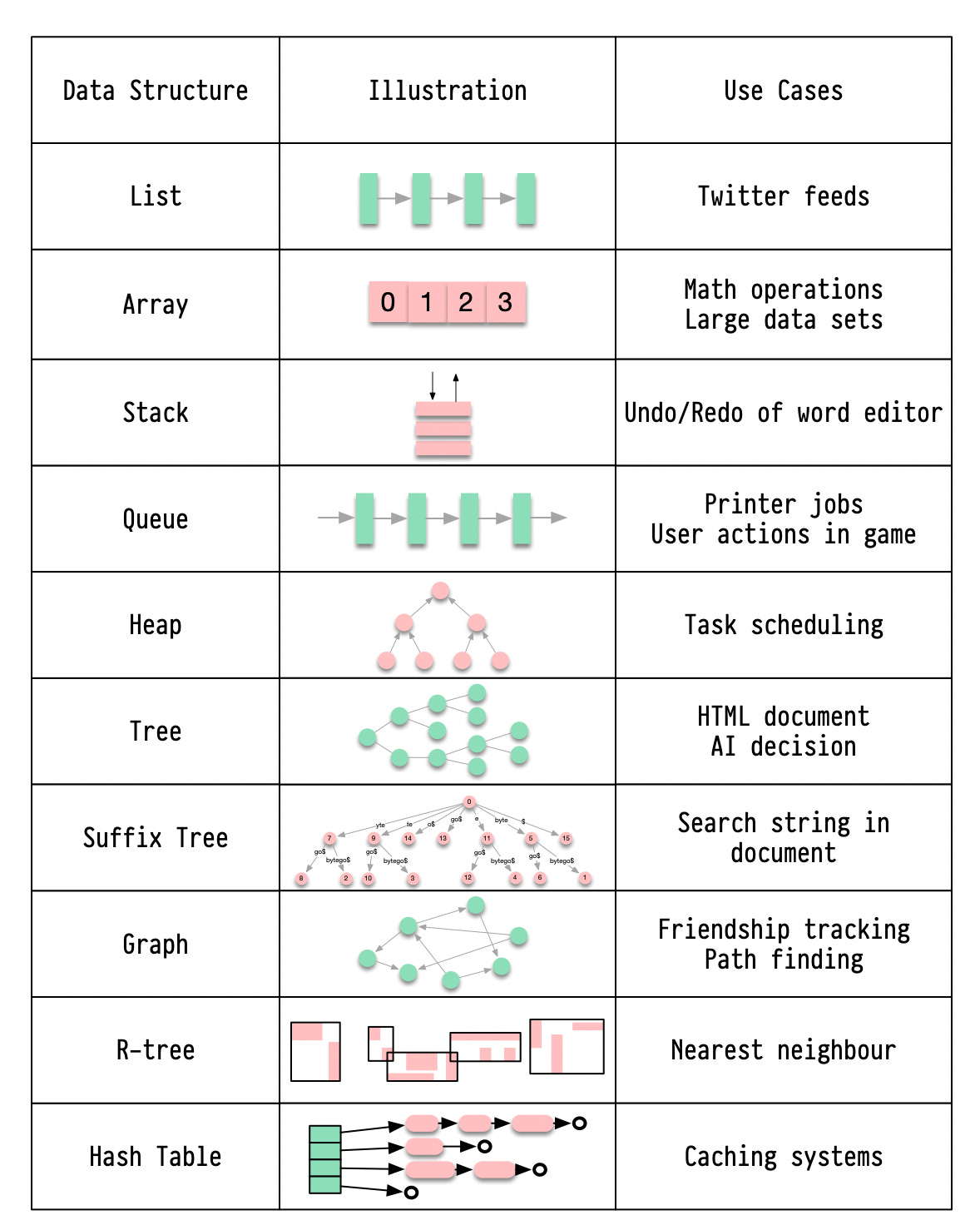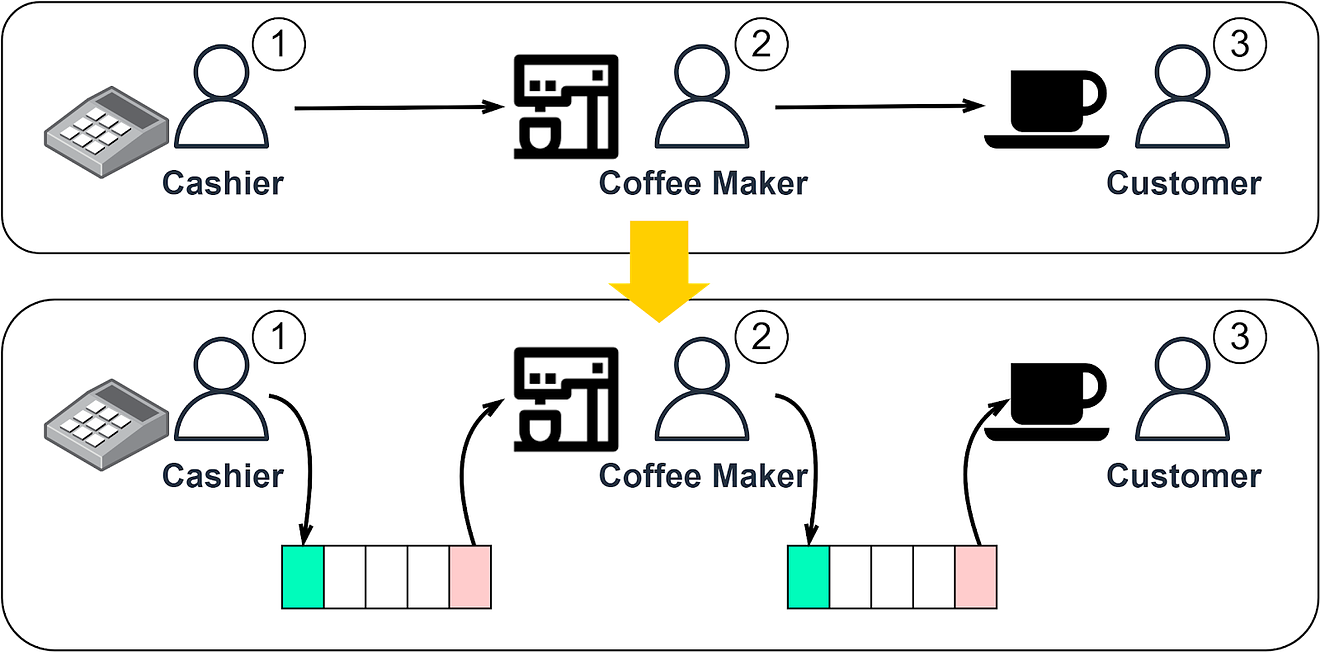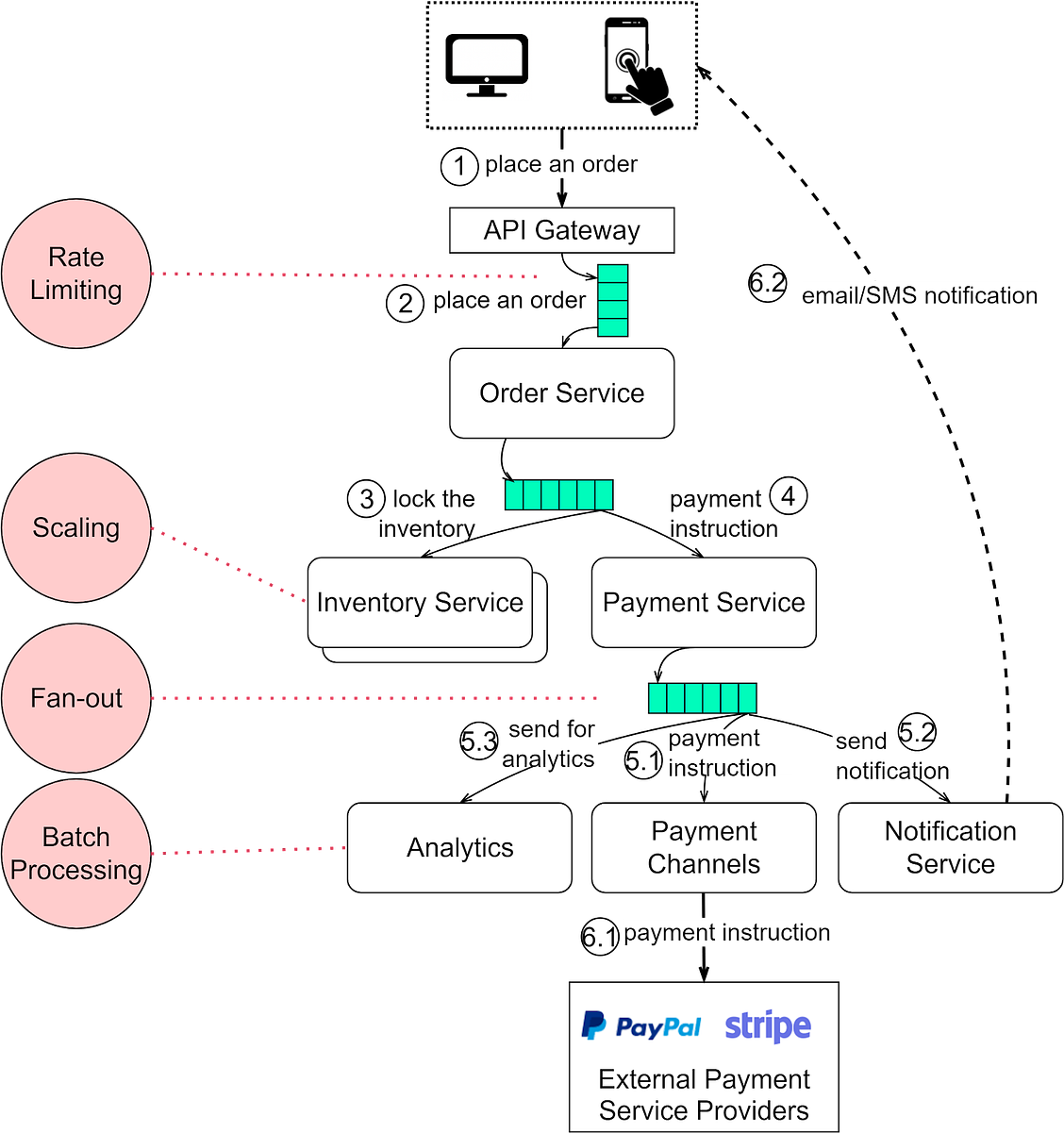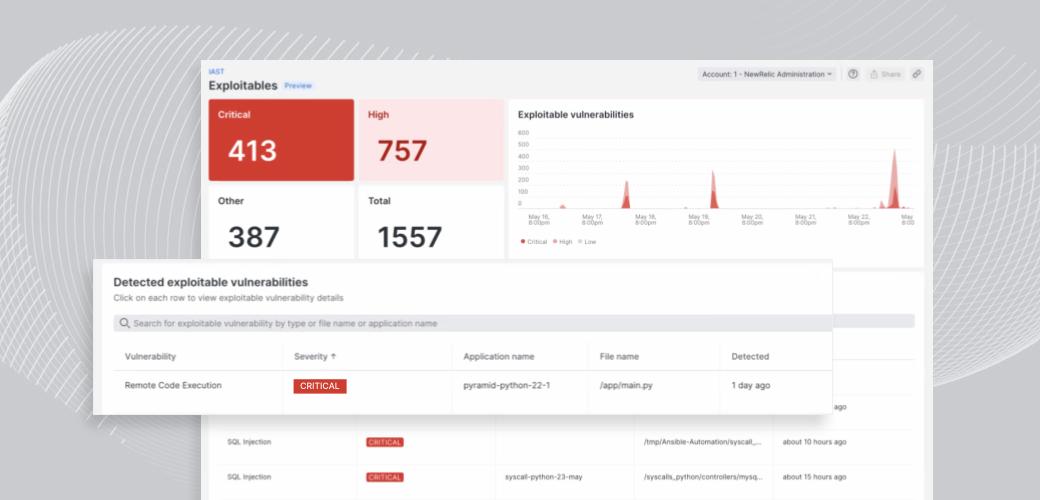Archives
- By thread 5340
-
By date
- June 2021 10
- July 2021 6
- August 2021 20
- September 2021 21
- October 2021 48
- November 2021 40
- December 2021 23
- January 2022 46
- February 2022 80
- March 2022 109
- April 2022 100
- May 2022 97
- June 2022 105
- July 2022 82
- August 2022 95
- September 2022 103
- October 2022 117
- November 2022 115
- December 2022 102
- January 2023 88
- February 2023 90
- March 2023 116
- April 2023 97
- May 2023 159
- June 2023 145
- July 2023 120
- August 2023 90
- September 2023 102
- October 2023 106
- November 2023 100
- December 2023 74
- January 2024 75
- February 2024 75
- March 2024 78
- April 2024 74
- May 2024 108
- June 2024 98
- July 2024 116
- August 2024 134
- September 2024 130
- October 2024 141
- November 2024 171
- December 2024 115
- January 2025 216
- February 2025 140
- March 2025 220
- April 2025 233
- May 2025 239
- June 2025 303
- July 2025 152
-
How to Choose a Message Queue? Kafka vs. RabbitMQ
How to Choose a Message Queue? Kafka vs. RabbitMQ
In the last issue, we discussed the benefits of using a message queue. Then we went through the history of message queue products. It seems that nowadays Kafka is the go-to product when we need to use a message queue in a project. However, it's not always the best choice when we consider specific requirements. Open in app or online This is a sneak peek of today’s paid newsletter for our premium subscribers. Get access to this issue and all future issues - by subscribing today.
Latest articles
If you’re not a subscriber, here’s what you missed this month.
"I Was Under Leveled!" — Avoiding the Tragedy of Making Only $500k a Year
Network Protocols behind Server Push, Online Gaming, and Emails
To receive all the full articles and support ByteByteGo, consider subscribing:
In the last issue, we discussed the benefits of using a message queue. Then we went through the history of message queue products. It seems that nowadays Kafka is the go-to product when we need to use a message queue in a project. However, it's not always the best choice when we consider specific requirements.
Database-Backed Queue
Let’s use our Starbucks example again. The two most important requirements are:
Asynchronous processing so the cashier can take the next order without waiting.
Persistence so customers’ orders are not missed if there is a problem.
Message ordering doesn’t matter much here because the coffee makers often make batches of the same drink. Scalability is not as important either since queues are restricted to each Starbucks location.
The Starbucks queues can be implemented in a database table. The diagram below shows how it works:
When the cashier takes an order, a new order is created in the database-backed queue. The cashier can then take another order while the coffee maker picks up new orders in batches. Once an order is complete, the coffee maker marks it done in the database. The customer then picks up their coffee at the counter.
A housekeeping job can run at the end of each day to delete complete orders (that is, those with the “DONE status).
For Starbucks’ use case, a simple database queue meets the requirements without needing Kafka. An order table with CRUD (Create-Read-Update-Delete) operations works fine.
Redis-Backed Queue
A database-backed message queue still requires development work to create the queue table and read/write from it. For a small startup on a budget that already uses Redis for caching, Redis can also serve as the message queue.
There are 3 ways to use Redis as a message queue:
Pub/Sub
List
Stream
The diagram below shows how they work.
Pub/Sub is convenient but has some delivery restrictions. The consumer subscribes to a key and receives the data when a producer publishes data to the same key. The restriction is that the data is delivered at most once. If a consumer was down and didn’t receive the published data, that data is lost. Also, the data is not persisted on disk. If Redis goes down, all Pub/Sub data is lost. Pub/Sub is suitable for metrics monitoring where some data loss is acceptable.
The List data structure in Redis can construct a FIFO (First-In-First-Out) queue. The consumer uses BLPOP to wait for messages in blocking mode, so a timeout should be applied. Consumers waiting on the same List form a consumer group where each message is consumed by only one consumer. As a Redis data structure, List can be persisted to disk.
Stream solves the restrictions of the above two methods. Consumers choose where to read messages from - “$” for new messages, “<id>” for a specific message id, or “0-0” for reading from the start.
In summary, database-backed and Redis-backed message queues are easy to maintain. If they can't satisfy our needs, dedicated message queue products are better. We'll compare two popular options next.
RabbitMQ vs. Kafka
For large companies that need reliable, scalable, and maintainable systems, evaluate message queue products on the following:
Functionality
Performance
Scalability
Ecosystem
The diagram below compares two typical message queue products: RabbitMQ and Kafka.
How They Work
RabbitMQ works like a messaging middleware - it pushes messages to consumers then deletes them upon acknowledgment. This avoids message pileups which RabbitMQ sees as problematic.
Kafka was originally built for massive log processing. It retains messages until expiration and lets consumers pull messages at their own pace.
Languages and APIs
RabbitMQ is written in Erlang which makes modifying the core code challenging. However, it offers very rich client API and library support.
Kafka uses Scala and Java but also has client libraries and APIs for popular languages like Python, Ruby, and Node.js.
Performance and Scalability
RabbitMQ handles tens of thousands of messages per second. Even on better hardware, throughput doesn’t go much higher.
Kafka can handle millions of messages per second with high scalability.
Ecosystem
Many modern big data and streaming applications integrate Kafka by default. This makes it a natural fit for these use cases.
Message Queue Use Cases
Now that we’ve covered the features of different message queues, let’s look at some examples of how to choose the right product.
Log Processing and Analysis
For an eCommerce site with services like shopping cart, orders, and payments, we need to analyze logs to investigate customer orders.
The diagram below shows a typical architecture uses the “ELK” stack:
ElasticSearch - indexes logs for full-text search
LogStash - log collection agent
Kibana - UI for search and visualizing logs
Kafka - distributed message queue
Keep reading with a 7-day free trial
Subscribe to
ByteByteGo Newsletterto keep reading this post and get 7 days of free access to the full post archives.A subscription gets you:
An extra deep dive on Thursdays Full archive Many expense it with team's learning budget Like
Comment
Restack
© 2023 ByteByteGo
548 Market Street PMB 72296, San Francisco, CA 94104
Unsubscribe
by "ByteByteGo" <bytebytego@substack.com> - 12:50 - 17 Aug 2023 -
Forward Thinking on the recipe for Asia’s success story with Justin Yifu Lin
Start from what you have New from McKinsey Global Institute

Forward Thinking on the recipe for Asia’s success story with Justin Yifu Lin
Start from what you have Prefer audio? Listen to the podcast, and explore past episodes of the Forward Thinking podcast. Subscribe via Google Podcasts, Apple Podcasts, Spotify, Stitcher, or Amazon Music.


This email contains information about McKinsey's research, insights, services, or events. By opening our emails or clicking on links, you agree to our use of cookies and web tracking technology. For more information on how we use and protect your information, please review our privacy policy.
You received this email because you subscribed to our McKinsey Global Institute alert list.
Copyright © 2023 | McKinsey & Company, 3 World Trade Center, 175 Greenwich Street, New York, NY 10007
by "McKinsey Global Institute" <publishing@email.mckinsey.com> - 12:39 - 17 Aug 2023 -
Participate in our Capture the Flag Challenge happening 22 - 23 August
Schneider Electric
 Boost your skills in cybersecurity!Schneider Electric is organising a jeopardy-style Capture The Flag (CTF) competition at Operational Technology Cybersecurity Expert Panel (OTCEP) Forum 2023 , and we would like to invite you to join!
Boost your skills in cybersecurity!Schneider Electric is organising a jeopardy-style Capture The Flag (CTF) competition at Operational Technology Cybersecurity Expert Panel (OTCEP) Forum 2023 , and we would like to invite you to join!
Day 1: 22 August, 09:00 - 16:00 SGT
Day 2: 23 August, 09:00 SGT - 13:00 SGT
There will be some challenges on ICS/OT, Reverse Engineering, Thick Client, Mobile Application, and so on. These challenges range in difficulty from intermediate to expert level.
Anyone can participate but if you have some basic understanding of networking, programming or Linux command line, this competition is for you!
Secure your spot now and experience the thrill of creative problem-solving by registering now! Ace the challenge and be rewarded!Complete the CTF challenges and rise up the scoreboard. Exciting prizes await for top 3 leaders of the scoreboard!
Ace the challenge and be rewarded!Complete the CTF challenges and rise up the scoreboard. Exciting prizes await for top 3 leaders of the scoreboard!
(Up to $5,950 SGD worth of prizes)+ Lifecycle Services From energy and sustainability consulting to optimizing the life cycle of your assets, we have services to meet your business needs. Schneider Electric
46 Rungrojthanakul Building. 1st, 10th, 11th Floor, Ratchadapisek Road. Huaykwang
Bangkok - 10310, Thailand
Phone +662 617 5555© 2023 Schneider Electric. All Rights Reserved. Schneider Electric is a trademark and the property of Schneider Electric SE, its subsidiaries and affiliated companies. All other trademarks are the property of their respective owners.
by "Schneider Electric" <reply@se.com> - 04:02 - 17 Aug 2023 -
Feria de Seguridad ESS+ Attendees list 2023
Dear Exhibitors,
Feria de Seguridad ESS+ 2023 - attendees list is available now at a discounted price.
Could you let me know if you want to receive the Attendee List by emails?
You can use this list for your booth invitation, pre-show marketing campaigns, and appointment setting. Easy tracking, quick response, global reach, targeted marketing, ROI, email fosters long-term relationships, and increased sales.
Interested — just reply back as “Send Counts, Cost"
Regards,
Adrian Gomez
(Events & Tradeshow Specialist)
by "Adrian Gomez" <adrian.gomez@globistictec.com> - 10:30 - 16 Aug 2023 -
Optimize Fleet Efficiency with Advanced RPM Monitoring
Optimize Fleet Efficiency with Advanced RPM Monitoring
The deeper unfoldings of our RPM monitoring approach and its impact on operational efficiency and vehicle performance.
The deeper unfoldings of our RPM monitoring approach and its impact on operational efficiency and vehicle performance.
Find out what makes our software stand out from the crowd
Customizable RPM Threshold
Empower fleet managers with the flexibility to set specific RPM limits or ranges based on individual preferences, vehicle types, or driving conditions.

Real-Time Insights at Fingertips
Access real-time RPM data for every vehicle in the fleet, right from your fleet management software.
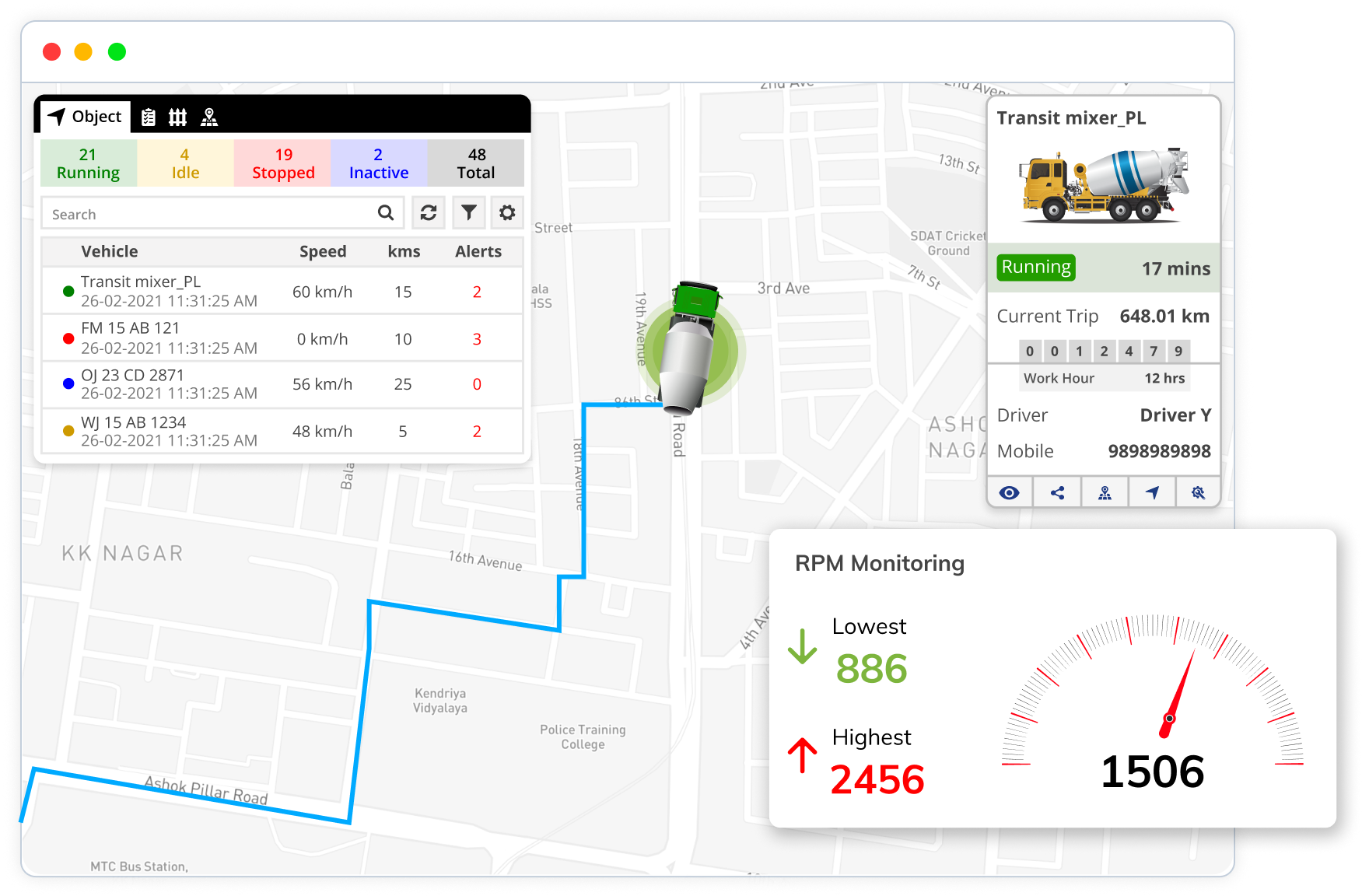
Insightful Reports and Instant Alerts
Harness RPM Monitoring to steer fleet towards success with proactive decisions, real-time alerts, and customizable reports for proven performance enhancements.
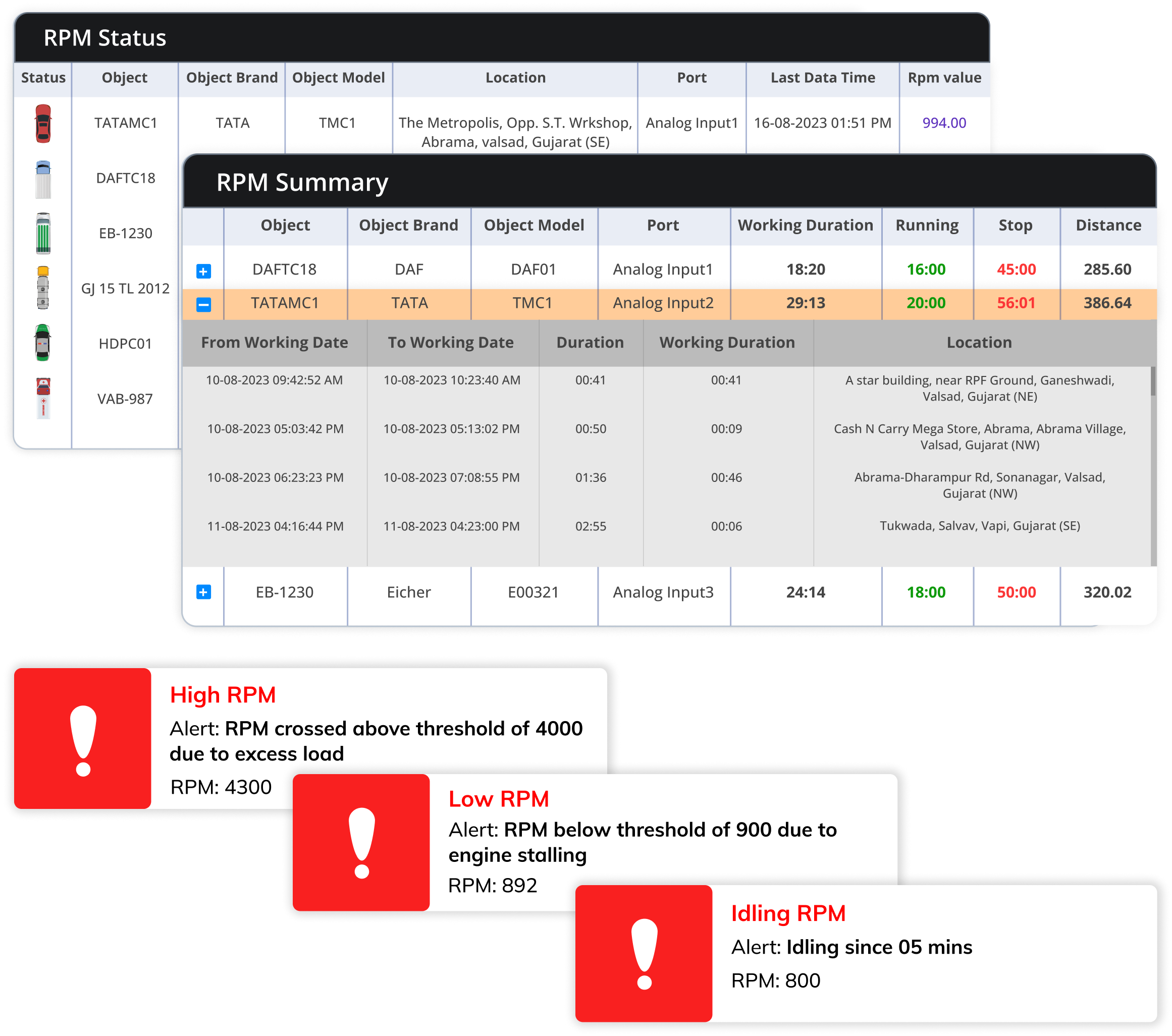
Empower your clients with precision-powered RPM Monitoring
Uffizio Technologies Pvt. Ltd., 4th Floor, Metropolis, Opp. S.T Workshop, Valsad, Gujarat, 396001, India
by "Sunny Thakur" <sunny.thakur@uffizio.com> - 08:00 - 16 Aug 2023 -
Your best customer may be the one you already have
Re:think
Companies can grow with existing customers 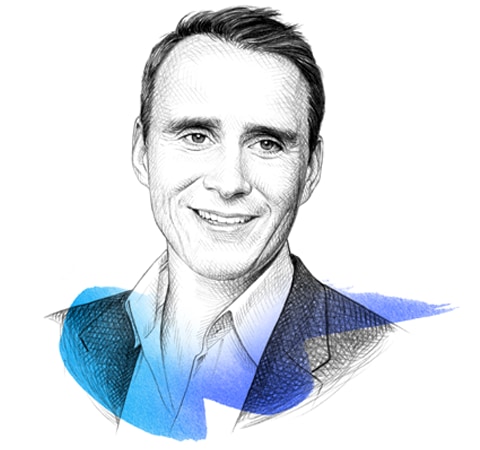
ON EXPERIENCE-LED GROWTH
Focusing on existing customers to unlock growth
Harald FanderlMany established companies grappling with competition focus on new customer acquisition to drive growth. But, in fact, focusing on existing customers can better optimize the current business and lay the foundation for future growth.
Experience-led growth, a strategy anchored around the goal of creating great customer satisfaction, also leads to better employee satisfaction and performance. Why?
There are several reasons: if companies focus on customers and their experiences, they make them happier, and because customer journeys go across various silos in organizations, employees can collaborate more and employee satisfaction increases as a result. Higher customer satisfaction and employee performance translates into better financial results and unlocks growth. To make up for the loss of one existing customer, companies have to acquire three new customers. And 80 percent of the value creation achieved by successful growth companies comes from their core business—namely, generating new revenue from existing customers.
Creating a harmonized, seamless customer journey for existing customers can cost significantly less than acquiring new customers. Customers who are more satisfied typically have fewer questions and therefore cost less to maintain, and the likelihood of retaining satisfied customers is 20 to 30 percent higher than if customers are less satisfied. Our research shows that over time, leaders who focus on customer experience achieve not only higher shareholder returns but also up to two times higher revenue growth than those whose customers are not as happy.
This is more critical now than ever because incumbent companies are increasingly reaching a saturation phase. Growth is really slowing down for some, so doubling down on customer orientation can be a great source of finding adjacent areas to grow into. Also, with competition and new solutions being generated from start-ups at a fast pace, it’s important for incumbents to rethink their business models. Focusing more on existing customers is one way to unlock untapped potential.“To make up for the loss of one existing customer, companies have to acquire three new customers.”
One experience-led growth tactic that is working really well these days is for companies to set up a win room that brings together all the important departments in an organization to drive customer acquisition, retention, and operational excellence. With clients in energy, insurance, telecom, and more, we have been successful in establishing experience-led growth as a theme, creating complete transparency between different groups and a better shared understanding of the metrics that drive retention, cross-selling, and growth because they’re in a win room together.
At one energy company in Europe, there were eight or nine floors with roughly 100 people responsible for different parts of the customer acquisition journey all scattered around in a building. We put them all together on one floor. When employees would walk onto this floor each day, they would look up and see numbers with the sales targets of the day, week, month, and year. They could see how they were performing as a complete team. With that information, the analytics team, the marketing team, and the digital team were able to overachieve their sales targets. This led to 20 to 30 percent greater growth beyond their already high ambitions. Financial performance, customer satisfaction, and employee satisfaction measurements over two years showed that all of them were up. It demonstrates what can be achieved with pragmatic approaches across all sectors and industries.
Another important element for successful experience-led growth is ambitious company leadership. It starts in the executive suite, where an engaged CEO can lead everyone to join forces. It’s not just the sales guy delivering the sales numbers; operations plays an important role too. Depending on the company structure, other lines of business need to be brought in as well. Having alignment in top management about how to activate a customer-led approach is absolutely crucial.
The final critical part of effective customer-centric growth is measurement. It’s not only important to measure customer satisfaction or the net promoter score (a metric for customer success) but to prioritize customer journeys. Then you can get to a place where you can predict customer satisfaction through analytics, by anticipating which segments will delight which customers and help retain them, or encourage them to buy more.
Most important, leaders need to be open in their organizations about their transformational journeys. Invite employees in, help them to overcome their mindset blockers, and encourage them to learn new skills. Don’t just say, “Be more customer oriented.” Identify skill gaps and encourage employees to tackle experience-led growth as part of their career development. There’s a strong positive company cultural dimension in bringing people together around their most important asset, the customer.ABOUT THE AUTHOR
MORE FROM THIS AUTHOR
UP NEXTRobin Riedel on the future of drone delivery
Delivery by drone has been touted as the next big thing, but it seems to be always on the cusp of a breakthrough. Today, start-ups, big retailers, and others are garnering investment, working through issues with regulators, and gaining more customer acceptance. Widespread drone delivery may be just around the corner.
This email contains information about McKinsey’s research, insights, services, or events. By opening our emails or clicking on links, you agree to our use of cookies and web tracking technology. For more information on how we use and protect your information, please review our privacy policy.
You received this email because you subscribed to our McKinsey Quarterly alert list.
Copyright © 2023 | McKinsey & Company, 3 World Trade Center, 175 Greenwich Street, New York, NY 10007
by "McKinsey Quarterly" <publishing@email.mckinsey.com> - 02:29 - 16 Aug 2023 -
CRYPTO FOREX EXPERT TRADERS AND FINANCIAL INVESTMENT MANAGERS
Hello,
I'm Rebecca Williams a professional FOREX, CRYPTO and essential COMMODITY trader and MENTOR with a huge opportunity for investors with guaranteed ROI(Return on Investment) over a short and long term investment period.
I offer you endless opportunities of earning massive huge income from the comfort of your home without having to do any task through bitcoin mining and forex trading.
You can earn as much as $100,000 to $1,000,000 or more weekly either by mentorship or portfolio management depending on your investment capital.
Let me know if you’re interested in investing in our company platform.
Reply me accordingly through our email ( teamexpertcrypto.traders@gmail.com) for immediate and proper follow up .Thanks for giving me the audience.
Best Regards,
Rebecca Williams
Portfolio Manager/Trade (financial expert)
Email:teamexpertcrypto.traders@gmail.com
Telegram Channel: https//t.me/Crpto_Expert_Trader01
by "REBECCA WILLIAMS" <info@nycthings.com> - 07:35 - 16 Aug 2023 -
Join me on Thursday for Troubleshooting Applications and back end performance with APM 360 Webinar
Hi MD,
It's Liam Hurrell, Manager of Customer Training at New Relic University, here. Are you ready to revolutionise your application monitoring and troubleshooting practices with our latest offering, New Relic APM 360? If so, you can register for the free online workshop that I'll be hosting on Thursday, 17th August at 10 am BST / 11 am CEST.
APM 360 allows you to get a unified view of critical telemetry data across your stack and development lifecycle. Prevent issues before they escalate and troubleshoot faster with integrated infrastructure monitoring, error user impact analysis, and distributed tracing. In this 90-minute workshop, I’ll show you how New Relic APM 360 can help eliminate blind spots with guided workflows.
You can find the full agenda on the registration page here. While we recommend attending the hands-on workshop live, you can also register to receive the recording.
Hope to see you then,
Liam HurrellManager, Customer TrainingNew Relic
This email was sent to info@learn.odoo.com as a result of subscribing or providing consent to receive marketing communications from New Relic. You can tailor your email preferences at any time here.Privacy Policy © 2008-23 New Relic, Inc. All rights reserved
by "Liam Hurrell, New Relic" <emeamarketing@newrelic.com> - 05:37 - 15 Aug 2023 -
ข้อ จำกัด ของคลาวด์? พบกับเครือข่ายของเอดจ์
Schneider Electric
วิดีโอที่ต้องดูสำหรับผู้ให้บริการโซลูชันด้านไอทีวิดีโอสั้นๆ ของเราที่ชื่อ IT Happens จะดูว่าไม่มีอะไรแน่นอนใน IT เลย แต่สามารถเป็นได้ด้วยข้อเสนอ APC ของ Schneider Electric และโซลูชัน
EcoStruxure™การจัดการระยะไกลสามารถนำไปสู่ผลกำไรผู้ให้บริการโซลูชันด้านไอทีบางรายเสนอบริการด้านพลังงานที่มีการจัดการ แต่ยังคงเหลืออะไรทิ้งไว้อีกมากมาย การสัมมนาผ่านเว็บนี้แสดงให้เห็นถึงคุณค่าที่เป็นไปได้ที่คุณสามารถปลดล็อกได้สำหรับตัวคุณเองและลูกค้าของคุณEdge ช่วยเติมเต็มระบบคลาวด์แอปพลิเคชันที่สำคัญต่อธุรกิจต้องการทรัพยากรที่แตกต่างกันที่เอดจ์ ซึ่งข้อมูลจำเป็นต้องได้รับการประมวลผลให้ใกล้เคียงกับตำแหน่งที่ใช้และสร้างขึ้นต้องการการอัปเดตอุตสาหกรรมล่าสุดเพื่อก้าวนำหน้าคู่แข่งหรือไม่?ลงทะเบียนสำหรับ mySchneider IT Solutions Partner Program ที่ได้รับรางวัล+ Lifecycle Services From energy and sustainability consulting to optimizing the life cycle of your assets, we have services to meet your business needs. Schneider Electric
46 Rungrojthanakul Building. 1st, 10th, 11th Floor, Ratchadapisek Road. Huaykwang
Bangkok - 10310, Thailand
Phone +662 617 5555© 2023 Schneider Electric, All Rights Reserved. Schneider Electric trademarks are owned by Schneider Electric or its affiliated companies in the United States and other countries. All other trademarks are property of their respective owners.
by "APC by Schneider Electric" <reply@se.com> - 11:00 - 14 Aug 2023 -
เตรียมธุรกิจของคุณให้พร้อมสำหรับการเปิดเผยข้อมูล ESG
Schneider Electric
Sustainability Reporting ToolboxESG: เปลี่ยนความต้องการให้กลายเป็นโอกาสยินดีต้อนรับสู่ยุคของการรายงาน ESG!ในปัจจุบันหลายองค์กรทั่วโลกได้หันมาปฏิบัติ ตามกฎระเบียบการเปิดเผยฟุตพริ้นท์ ด้านสิ่งแวดล้อม สังคม และธรรมาภิบาล (ESG) กันเป็นจำนวนมาก และมีจำนวนเพิ่มขึ้นอย่างรวดเร็ว รวมทั้งในเอเชียแปซิฟิกก็เช่นกัน ขณะเดียวกัน สินทรัพย์ด้าน ESG กำลังจะมีมูลค่าเกิน 50 ล้านล้านดอลลาร์ภายในปี 2568 ซึ่งคิดเป็นมูลค่ามากกว่าหนึ่งในสามของสินทรัพย์ทั่วโลกที่อยู่ภายใต้การจัดการ ดังนั้นแรงกดดันที่มาจากนักลงทุนเรื่องการรายงานการริเริ่มโครงการด้าน ESG ก็จะมีมากขึ้น แม้ข้อบังคับเหล่านี้จะมาพร้อมกับความท้าทาย แต่ก็ถือเป็นโอกาสด้วยเช่นกันกลับสู่จุดเริ่มต้นเหตุใด ESG จึงมีความสำคัญต่อองค์กรของคุณ เกิดอะไรขึ้นกับการกำหนดมาตรฐานแนวทางการรายงานขององค์กร เราควรให้ความใส่ใจกับงานส่วนใด พบคำตอบได้ทันทีในคู่มือของเราถอดรหัสไปยังรายงาน ESG<divstyle="overflow-wrap: break-word; word-wrap: break-word; word-break: break-all;"> การลงทุน ESG ให้ประโยชน์ถึงสองเท่า: ทั้งโอกาสที่จะสร้างสิ่งที่ดีให้ต่อโลกที่มาพร้อมกับผลประโยชน์ทางธุรกิจ เพียงปฏิบัติตาม 3 ขั้นตอนนี้ เพื่อความก้าวหน้าในยุคใหม่:- ทำการประเมินสาระสำคัญ
- ดำเนินการสำรวจและรวบรวมข้อมูล
- เลือกกรอบการรายงาน ESG ที่เหมาะสม
หากคุณกำลังมองหาแหล่งข้อมูลที่ถูกต้อง ที่ปรึกษาด้านทรัพยากรบนคลาวด์และการขับเคลื่อนด้วย AI เราพร้อมดูแลคุณด้วย: เฟรมเวิร์คที่ตรงกับทั่วโลก
เฟรมเวิร์คที่ตรงกับทั่วโลก การวิเคราะห์ข้อมูล ESG
การวิเคราะห์ข้อมูล ESG พัฒนาการทำงานภายในองค์กร
พัฒนาการทำงานภายในองค์กร การสื่อสารที่ชัดเจน
การสื่อสารที่ชัดเจน+ Lifecycle Services From energy and sustainability consulting to optimizing the life cycle of your assets, we have services to meet your business needs. Schneider Electric
46 Rungrojthanakul Building. 1st, 10th, 11th Floor, Ratchadapisek Road. Huaykwang
Bangkok - 10310, Thailand
Phone +662 617 5555© 2023 Schneider Electric, All Rights Reserved. Schneider Electric trademarks are owned by Schneider Electric or its affiliated companies in the United States and other countries. All other trademarks are property of their respective owners.
by "Schneider Electric" <reply@se.com> - 10:02 - 14 Aug 2023 -
Know how parts inventory management is a game changer across multiple industries
Know how parts inventory management is a game changer across multiple industries
Explore how strategic fleet parts inventory management keeps vehicles on the road and businesses on the path to success.
Explore how strategic fleet parts inventory management keeps vehicles on the road and businesses on the path to success.
Use Cases
Fleet Maintenance
Overcoming delayed repairs due to stockouts with real-time inventory tracking.

Heavy Machinery
Surpassing unplanned downtime with categorization feature for optimal spare parts management.

Discuss your use-case to get your business growing
Uffizio Technologies Pvt. Ltd., 4th Floor, Metropolis, Opp. S.T Workshop, Valsad, Gujarat, 396001, India
by "Sunny Thakur" <sunny.thakur@uffizio.com> - 08:00 - 14 Aug 2023 -
A leader’s quick-start guide to generative AI
You’ve bot this
by "McKinsey Leading Off" <publishing@email.mckinsey.com> - 02:55 - 14 Aug 2023 -
You’re invited to the latest DevCon workshop: How To Build a Smart Queue Management System
You’re invited to the latest DevCon workshop: How To Build a Smart Queue Management System
Learn about Smart Queue Management Systems


How To Build a Smart Queue Management System Step by Step? From Zero to Hero.
September 5, 2023; 7PM-8PM IST
Register now 


Md Abul,
Join us for a tutorial on how to create an intelligent retail queue management system using the OpenVINO™ toolkit and YOLOv8. By the end of the presentation, you'll have the knowledge and resources to build your own solution.
What you’ll learn:
- Step-by-step easy-to-follow Jupyter Notebook tutorial
- Real-time detection and tracking of people for efficient queue management and staffing optimization
- Optimized for multi-model workloads across various Intel processors
- Where to find resources; open-source code, dataset, videos, and a blog available on GitHub for easy customization and extension to your specific needs
Register today 


Adrian Boguszewski
AI Software Evangelist, Intel
Adrian, an OpenVINO developer evangelist, is frequently a speaker at data science conferences, enjoys working with big data and creating solutions for big companies in Poland.

Anisha Udayakumar
AI Software Evangelist, Intel
Anisha is an AI Evangelist at Intel with a passion for the OpenVINO™ toolkit. She is a member of an innovation team that leverages cutting-edge technologies such as AI, Augmented Reality, Virtual Reality, Robotics, and XR to build rapid prototypes and vision-based retail solutions.On-Demand DevCon Workshops
OpenVINO 2023.0 – See What’s New

Harness Generative AI Acceleration with OpenVINO™ toolkit

Beyond the Continuum: The Importance of Quantization in Deep Learning







If you forward this email, your contact information will appear in any auto-populated form connected to links in this email.
This was sent to info@learn.odoo.com because you are subscribed to Webinars. To view and manage your marketing-related email preferences with Intel, please click here.
© 2023 Intel Corporation
Intel Corporation, 2200 Mission College Blvd., M/S RNB4-145, Santa Clara, CA 95054 USA. www.intel.com
Privacy | Cookies | *Trademarks | Unsubscribe | Manage Preferences
by "Intel Developer Zone" <intel.developer.zone@plan.intel.com> - 12:32 - 14 Aug 2023 -
EP72: OAuth 2.0 Explained With Simple Terms
EP72: OAuth 2.0 Explained With Simple Terms
This week’s system design refresher: Git Merge vs. Rebase vs. Squash Commit (Youtube video) OAuth 2.0 Explained With Simple Terms Top 4 Forms of Authentication Mechanisms Uber Tech Stack - CI/CD Leadership Styles Around The World Introducing New Relic Interactive Application Security Testing (IAST)(Sponsored) Open in app or online This week’s system design refresher:
Git Merge vs. Rebase vs. Squash Commit (Youtube video)
OAuth 2.0 Explained With Simple Terms
Top 4 Forms of Authentication Mechanisms
Uber Tech Stack - CI/CD
Leadership Styles Around The World
Introducing New Relic Interactive Application Security Testing (IAST)(Sponsored)
New Relic Interactive Application Security Testing (IAST) is now in public preview! Engineers, DevOps, and security teams can now find, fix, and verify high-risk vulnerabilities early and accurately to build more secure applications—and ship code faster.
Git Merge vs. Rebase vs. Squash Commit
Oauth 2.0 Explained With Simple Terms
OAuth 2.0 is a powerful and secure framework that allows different applications to securely interact with each other on behalf of users without sharing sensitive credentials.
The entities involved in OAuth are the User, the Server, and the Identity Provider (IDP).
What Can an OAuth Token Do?
When you use OAuth, you get an OAuth token that represents your identity and permissions. This token can do a few important things:
Single Sign-On (SSO): With an OAuth token, you can log into multiple services or apps using just one login, making life easier and safer.
Authorization Across Systems: The OAuth token allows you to share your authorization or access rights across various systems, so you don't have to log in separately everywhere.
Accessing User Profile: Apps with an OAuth token can access certain parts of your user profile that you allow, but they won't see everything.
Remember, OAuth 2.0 is all about keeping you and your data safe while making your online experiences seamless and hassle-free across different applications and services.
Over to you: Imagine you have a magical power to grant one wish to OAuth 2.0. What would that be? Maybe your suggestions actually lead to OAuth 3.Latest articles
If you’re not a paid subscriber, here’s what you missed this month.
"I Was Under Leveled!" — Avoiding the Tragedy of Making Only $500k a Year
Network Protocols behind Server Push, Online Gaming, and Emails
To receive all the full articles and support ByteByteGo, consider subscribing:
Top 4 Forms of Authentication Mechanisms
SSH Keys:
Cryptographic keys are used to access remote systems and servers securelyOAuth Tokens:
Tokens that provide limited access to user data on third-party applicationsSSL Certificates:
Digital certificates ensure secure and encrypted communication between servers and clientsCredentials:
User authentication information is used to verify and grant access to various systems and services
Over to you: How do you manage those security keys? Is it a good idea to put them in a GitHub repository?
Guest post by Govardhana Miriyala Kannaiah.
Uber Tech Stack - CI/CD
Uber is one of the most innovative companies in the engineering field. Let’s take a look at their CI/CD tech stacks.
Note: This post is based on research on Uber engineering blogs. If you spot any inaccuracies, please let us know.
Project planning: JIRA
Backend services: Spring Boot to develop their backend services. And to make things even faster, they've created a nifty configuration system called Flipr that allows for speedy configuration releases.
Code issues: They developed NullAway to tackle NullPointer problems and NEAL to lint the code. Plus, they built Piranha to clean out-dated feature flags.
Repository: They believe in Monorepo. It uses Bazel on a large scale.
Testing: They use SLATE to manage short-lived testing environments and rely on Shadower for load testing by replaying production traffic. They even developed Ballast to ensure a smooth user experience.
Experiment platform: it is based on deep learning and they've generously open-sourced parts of it, like Pyro.
Build: Uber packages their services into containers using uBuild. It's their go-to tool, powered by Buildkite, for all the packaging tasks.
Deploying applications: Netflix Spinnaker. It's their trusted tool for getting things into production smoothly and efficiently.
Monitoring: Uber built their own monitoring systems. They use the uMetric platform, built on Cassandra, to keep things consistent.
Special tooling: Uber relies on Peloton for capacity planning, scheduling, and operations. Crane builds a multi-cloud infrastructure to optimize costs. And with uAct and the OnCall dashboard, they've got event tracing and on-call duty management covered.
Have you ever used any of Uber's tech stack for CI/CD? What are your thoughts on their CI/CD setup?Leadership Styles Around The World
Different leadership styles can be profoundly influenced by cultural differences. Do you agree with the diagram?
Credit: ‘When cultures collide’ book by Richard D. Lewis
Latest articles
Here are the latest articles you may have missed:
To receive all the full articles and support ByteByteGo, consider subscribing:
Like
Comment
Restack
© 2023 ByteByteGo
548 Market Street PMB 72296, San Francisco, CA 94104
Unsubscribe
by "ByteByteGo" <bytebytego@substack.com> - 11:35 - 12 Aug 2023 -
Cómo usar la IA generativa para crear valor
Además, ¿está ofreciendo las recompensas adecuadas a sus gerentes más valiosos? La IA generativa sigue causando sensación en todos los sectores por una buena razón: la investigación de McKinsey estima que podría agregar el equivalente a entre $2.6 billones y $4.4 billones de dólares de valor anualmente. Pero, ¿cómo pueden los líderes convertir la promesa de la IA generativa en valor sostenible para las empresas? En el primer artículo destacado de este mes, Aamer Baig, Sven Blumberg, Eva Li, Douglas Merrill, Adi Pradhan, Megha Sinha, Alexander Sukharevsky y Stephen Xu identifican nueve acciones que todos los líderes tecnológicos pueden llevar a cabo para crear valor, orquestar la tecnología y los datos, escalar las soluciones y gestionar el riesgo. En nuestro segundo artículo destacado, Frithjof Lund, Dana Maor, Nina Spielmann y Alexander Sukharevsky plantean cuatro preguntas sobre la IA generativa que los consejos de administración deberían formular a los directivos de las empresas, así como una pregunta que los miembros del consejo deberían hacerse a sí mismos. Otros temas destacados de la edición de este mes son los siguientes:
•
por qué los mandos intermedios son el verdadero centro de las organizaciones
•
cuatro tareas imprescindibles que deben realizar los ejecutivos del sector minorista para gestionar un equipo multigeneracional
•
cómo gestionar el nuevo equipo multigeneracional
•
los resultados de este mes de la Encuesta Global McKinsey sobre las condiciones económicas
La selección de nuestros editores
LOS DESTACADOS DE ESTE MES

Los mandos intermedios son el corazón de su empresa
Deje de pensar en los mandos intermedios como una estación de paso. Más bien, conviértalos en un destino.
Ofrezca las recompensas adecuadas
Reset minorista: Un nuevo manual de tácticas para los líderes del comercio minorista
A la luz de las disrupciones sin precedentes en la industria, las medidas que adopte un minorista hoy podrían determinar si pasa los próximos 20 años como líder o como rezagado. He aquí cuatro cosas que los ejecutivos del sector minorista deben hacer.
Adelántese a las prioridades
Dar sentido a los estereotipos generacionales en el trabajo
Los boomers están a la izquierda; los de la generación Z, a la derecha. ¿En realidad somos tan diferentes?
Conozca más
Perspectivas de las condiciones económicas en tiempos turbulentos, junio de 2023
El optimismo económico sigue creciendo en gran parte del mundo, mientras que las opiniones sobre las tasas de interés y los riesgos potenciales para el crecimiento global han cambiado desde el trimestre pasado.
Actualícese
La transición de materiales cero neto: Implicaciones para las cadenas de suministro globales
Para proporcionar materiales esenciales para la transición energética, las industrias metalúrgica y minera deben adaptar sus cadenas de suministro mundiales.
Profundice más
La empresa reconfigurada: Cómo cinco compañías se desarrollaron para superar a la competencia
Las lecciones de cinco empresas reconfiguradas muestran cómo convertir las ganancias digitales iniciales en ganancias para toda la empresa.
Desarrolle distancia digitalEsperamos que disfrute de los artículos en español que seleccionamos este mes y lo invitamos a explorar también los siguientes artículos en inglés.
ENCUESTA DESTACADA

McKinsey Explainers
Find direct answers to complex questions, backed by McKinsey’s expert insights.
Learn more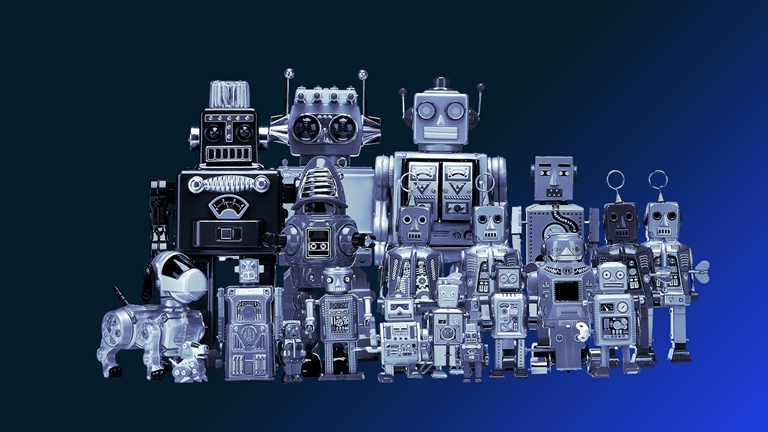
McKinsey Themes
Browse our essential reading on the topics that matter.
Get up to speed
McKinsey on Books
Explore this month’s best-selling business books prepared exclusively for McKinsey Publishing by Circana.
See the lists
McKinsey Chart of the Day
See our daily chart that helps explain a changing world—as we strive for sustainable, inclusive growth.
Dive in
McKinsey Classics
What’s the link between “moments of truth” and customers’ purchase decisions? Read our 2006 classic “The ‘moment of truth’ in customer service” to learn more.
Rewind
The Daily Read
Our Daily Read newsletter highlights an article a day, picked by our editors.
Subscribe now— Edited by Joyce Yoo, editor, New York
COMPARTA ESTAS IDEAS
¿Disfrutó este boletín? Reenvíelo a colegas y amigos para que ellos también puedan suscribirse. ¿Se le remitió este articulo? Regístrese y pruebe nuestras más de 40 suscripciones gratuitas por correo electrónico aquí.
Este correo electrónico contiene información sobre la investigación , los conocimientos, los servicios o los eventos de McKinsey. Al abrir nuestros correos electrónicos o hacer clic en los enlaces, acepta nuestro uso de cookies y tecnología de seguimiento web. Para obtener más información sobre cómo usamos y protegemos su información, consulte nuestra política de privacidad.
Recibió este correo electrónico porque es un miembro registrado de nuestro boletín informativo Destacados.
Copyright © 2023 | McKinsey & Company, 3 World Trade Center, 175 Greenwich Street, New York, NY 10007
by "Destacados de McKinsey" <publishing@email.mckinsey.com> - 08:20 - 12 Aug 2023 -
We missed you at Beyond the Continuum: The Importance of Quantization in Deep Learning
We missed you at Beyond the Continuum: The Importance of Quantization in Deep Learning
Sorry you couldn’t make it (but you can stream it anytime:-)


Beyond the Continuum: The Importance of Quantization in Deep Learning
Watch on-demand 


We're sorry we missed you at our workshop Beyond the Continuum: The Importance of Quantization in Deep Learning, but not to worry, the on-demand replay is now available for you to watch anytime.
Watch to learn:
- The value of quantization and different types of quantization
- How to harness NNCF with the OpenVINO™ toolkit
- A Jupyter Notebook demonstrating a neural network graph before-and-after quantization with performance comparisons
Watch now 
Don’t Stop There
- Watch tutorials, view use cases and see all the toolkit options at openvino.ai
- Download your free version of Intel® Distribution of OpenVINO™ toolkit and
- Explore the OpenVINO™ toolkit Github repository of Jupyter Notebooks, Training Extensions, Models, and more…






If you forward this email, your contact information will appear in any auto-populated form connected to links in this email.
This was sent to info@learn.odoo.com because you are subscribed to Webinars. To view and manage your marketing-related email preferences with Intel, please click here.
© 2023 Intel Corporation
Intel Corporation, 2200 Mission College Blvd., M/S RNB4-145, Santa Clara, CA 95054 USA. www.intel.com
Privacy | Cookies | *Trademarks | Unsubscribe | Manage Preferences
by "Intel Developer Zone" <intel.developer.zone@plan.intel.com> - 03:30 - 11 Aug 2023 -
Gen AI in the limelight
The Shortlist
Four new insights Curated by Liz Hilton Segel, chief client officer and managing partner, global industry practices, & Homayoun Hatami, managing partner, global client capabilities
Twice monthly, we bring you four new insights out of the dozens we publish that we think are worth a second glance from any business leader in any geography. In this edition, we look at gen AI’s meteoric rise, how digital twins could revolutionize product development, and more. We hope you enjoy the read.
—Liz and Homayoun
Generative AI makes a loud entrance. That’s one of the first findings of the McKinsey Technology Council’s roundup of this year’s 15 tech trends. The Council estimated the potential for value creation and laid out some strategies for how to do it. Applied AI is on everyone’s mind, but the Council also pinpointed exciting changes in advanced connectivity, green technologies, and much more.
Roll out the welcome mat with McKinsey Technology Trends Outlook 2023 by Michael Chui, Mena Issler, Roger Roberts, and Lareina Yee.
Start your engines. This time last year, almost nobody was even wondering about generative AI, much less planning how to utilize it. Now, it’s almost all we can talk about—and a third of respondents to the latest annual McKinsey Global Survey say their organizations are already using gen AI regularly in at least one business function. Looking ahead, three-quarters of all respondents expect gen AI to disrupt their industry’s competition in the next three years.
For more wow stats, and to chart gen AI’s path through your organization, scroll through The state of AI in 2023: Generative AI’s breakout year, a survey developed by Michael Chui, Bryce Hall, Alex Singla, Alexander Sukharevsky, and Lareina Yee.
Dive deep into how these technologies can juice product development in Digital twins: The key to smart product development, by Roberto Argolini, Federico Bonalumi, Johannes Deichmann, and Stefania Pellegrinelli. And for some background, check out our Explainer on digital twins.
Share these insights
This email contains information about McKinsey’s research, insights, services, or events. By opening our emails or clicking on links, you agree to our use of cookies and web tracking technology. For more information on how we use and protect your information, please review our privacy policy.
You received this email because you subscribed to The Shortlist newsletter.
Copyright © 2023 | McKinsey & Company, 3 World Trade Center, 175 Greenwich Street, New York, NY 10007
by "McKinsey Shortlist" <publishing@email.mckinsey.com> - 02:22 - 11 Aug 2023 -
Fleet Parts Inventory Management System - Manage, Reduce Downtime and Cost
Fleet Parts Inventory Management System - Manage, Reduce Downtime and Cost
Find out what makes our software stand out from the crowd
Find out what makes our software stand out from the crowd
Centralized Inventory Management
Empower Business with Unified Inventory Oversight through Centralized Control.
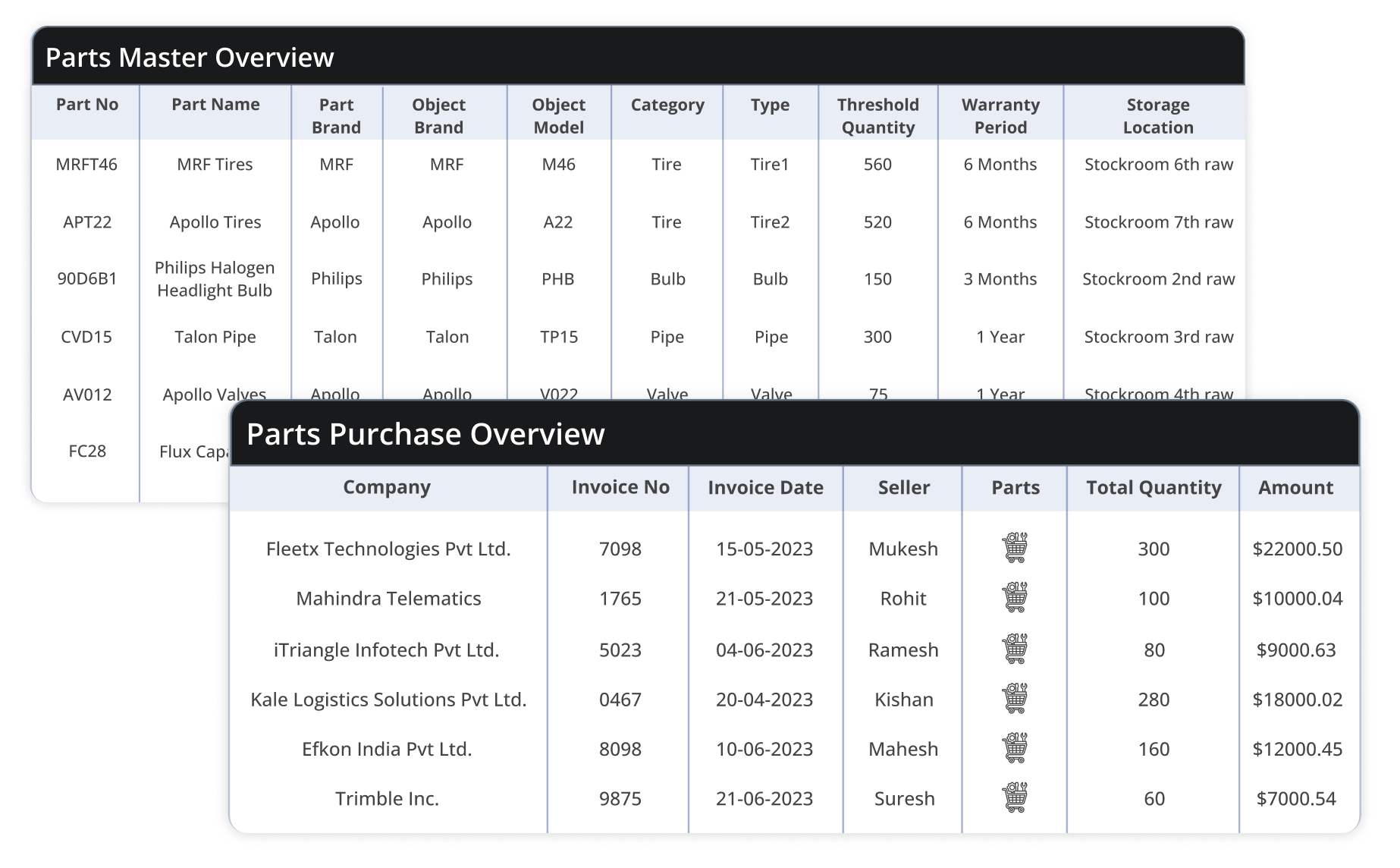
Realtime Inventory Tracking
Elevate Inventory Management with realtime inventory tracking.
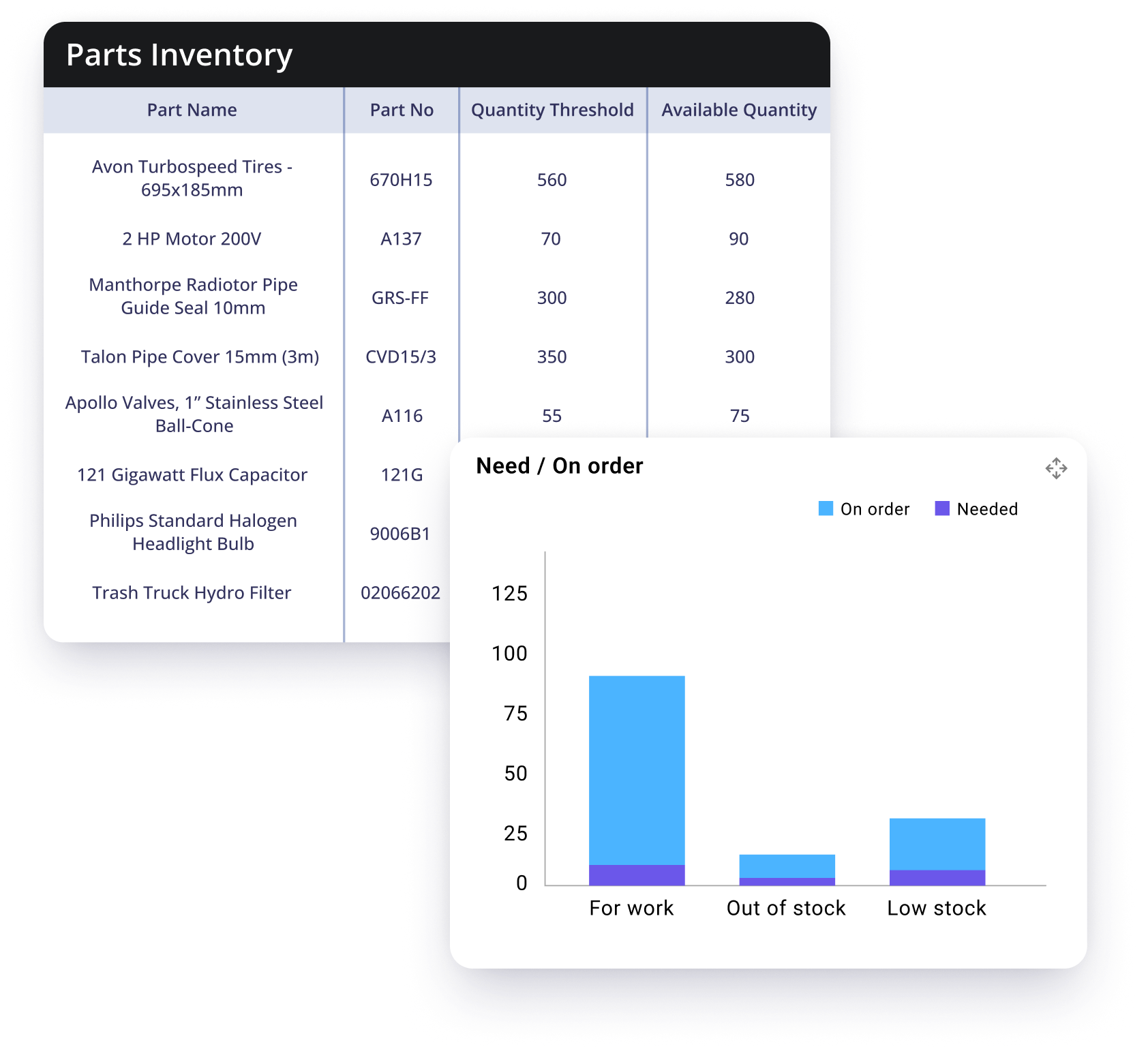
Barcode/ QR Code Scan Capability
Harness the Power of Barcode and QR Code Scans for Seamless Inventory Control.

Empower your clients with precision-powered parts inventory management
Uffizio Technologies Pvt. Ltd., 4th Floor, Metropolis, Opp. S.T Workshop, Valsad, Gujarat, 396001, India
by "Sunny Thakur" <sunny.thakur@uffizio.com> - 09:00 - 10 Aug 2023 -
Why Do We Need a Message Queue?
Why Do We Need a Message Queue?
In this issue, we’re diving deep into a widely-used middleware: the message queue. Message queues have a long history. They are often used for communication between different systems. Figure 1 illustrates the concept of a message queue by comparing it to how things work at Starbucks. Open in app or online This is a sneak peek of today’s paid newsletter for our premium subscribers. Get access to this issue and all future issues - by subscribing today.
Latest articles
If you’re not a subscriber, here’s what you missed this month.
"I Was Under Leveled!" — Avoiding the Tragedy of Making Only $500k a Year
Network Protocols behind Server Push, Online Gaming, and Emails
To receive all the full articles and support ByteByteGo, consider subscribing:
In this issue, we’re diving deep into a widely-used middleware: the message queue.
Message queues have a long history. They are often used for communication between different systems. Figure 1 illustrates the concept of a message queue by comparing it to how things work at Starbucks.
At Starbucks, the cashier takes the order and collects money, then they write the customer’s name on a coffee cup to hand over to the next step. The coffee maker picks up the order and the cup and makes coffee. The customer then picks up the coffee at the counter. The three steps work asynchronously. The cashier just drops the order in the form of a coffee cup and does not wait for its completion. The coffee maker just drops the completed coffee on the counter and does not wait for the customer to pick it up.
When you place an order at Starbucks, the cashier takes the order and scribbles your name on a cup and moves to the next customer. A barista then picks up the cup, prepares your drink, and leaves it for you to collect. The beauty of this process is that each step operates independently. It is much like an asynchronous system.
This asynchronous processing, where each step doesn’t have to wait for the previous one to complete, significantly increases the throughput of the system. For instance, the cashier doesn’t wait for your drink to be made before taking another order.
A Message Queue Example
Now, let’s shift our focus to a real-world example: flash sales in e-commerce. Flash sales can strain systems due to surge in user activity. Many strategies are employed to manage this demand, and message queues often play a pivotal role in backend optimizations.
A simplified eCommerce flash sale architecture is listed in Figure 2.
Steps 1 and 2: A customer places an order to the order service.
Step 3: Before processing the payment, the order service reserves the selected inventory.
Step 4: The order service then sends a payment instruction to the payment service. The payment service fans out to 3 services: payment channels, notifications, and analytics.
Steps 5.1 and 6.1: The payment service sends the payment instruction to the payment channel service. The payment channel service talks to external PSPs (Payment Service Providers) to finalize the transaction.
Steps 5.2 and 6.2: The payment service sends a notification to the notification service, which then sends a notification to the customer via email or SMS.
Step 5.3: The payment service sends transaction details to the analytics service.
A key takeaway here is that a seamless user experience is crucial during flash sales. To maintain service responsiveness despite high traffic, message queues can be integrated at multiple stages to ensure optimal performance.
Benefits of Message Queues
Fan-out
The payment service sends data to three downstream services for different purposes: payment channels, notifications, and analytics. This fan-out method is like someone shouting a message across a room; whoever needs to hear it, does. The producer simply drops the message on the queue, and the consumers process the message at their own pace.
Asynchronous Processing
Drawing from the Starbucks analogy, just as the cashier doesn’t wait for the coffee to be made, the order service does not wait for the payments to finalize. The payment instruction is placed on the queue, and the customer is notified once it’s finalized.
Rate Limiting
In a flash sale, there can be tens of thousands of concurrent users placing orders simultaneously. It is crucial to strike a balance between accommodating eager customers and maintaining system stability. A common approach is to cap the number of incoming requests within a specific time frame to match the capacity of the system. Excess requests might be rejected or asked to retry after a short delay. This approach ensures the system remains stable and doesn’t get overwhelmed. For requests that make it through, message queues ensure they’re processed efficiently and in order. If one part of the system is momentarily lagging, the order isn’t lost. It’s held in the queue until it can be processed. This ensures a smooth flow even under pressure.
Decoupling
Our design uses message queues in various places. The overall architecture is different from the simplified version presented in Figure 2. Services interact with each other using well-defined message interfaces rather than depending tightly on each other. Each service can be modified and deployed independently. Each component can be developed in a different programming language. This brings flexibility to the architectural design.
Horizontal Scalability
Since the services are decoupled, we can scale them independently based on demand. Each service can serve in a different capacity, so we can scale based on their planned QPS (query per second) or TPS (transaction per second).
Message Persistence
Message queues can also be used as middleware that stores messages. If the upstream service crashes, the downstream service can always pick up the messages from the message queue to process. In this way, the recovery function is moved out of each service and becomes the responsibility of the message queue.
Batch Processing
Sometimes in the processing flow, we need to batch the data to get the summary. For example, when the payment service sends updates to the analytics service, the analytics service does not need to perform real-time updates but rather set up a tumbling window to process in batches. The batch processing is the requirement of the downstream services, so there is no need for the payment service to know about it, just drop the messages into the queue.
Message Ordering
In a flash sale, there is a limited number of inventory items. For example, a flash sale offers only 10 iPhones, but there are over 10,000 users who place the order. How do we decide on the order? Having a message queue to keep all the orders will have a natural order: The first 10 in the queue will get the iPhone.
In Figure 3 we put everything together, where the services are connected via message queues and decoupled. In this way, the architecture can achieve higher throughput.
Keep reading with a 7-day free trial
Subscribe to ByteByteGo Newsletter to keep reading this post and get 7 days of free access to the full post archives.
A subscription gets you:
An extra deep dive on Thursdays Full archive Many expense it with team's learning budget Like
Comment
Restack
© 2023 ByteByteGo
548 Market Street PMB 72296, San Francisco, CA 94104
Unsubscribe
by "ByteByteGo" <bytebytego@substack.com> - 11:37 - 10 Aug 2023 -
Ship code faster with unmatched detection accuracy of security risks
New Relic
 August 2023
August 2023Ship code faster with unmatched detection accuracy of security risks See and secure every application you build and run, and ship code faster with New Relic interactive application security testing (IAST). Pinpoint vulnerabilities with unmatched detection accuracy and proof-of-exploit for faster remediation. Now in public preview!Learn more  Unlock the full potential of Kubernetes with the New Relic Kubernetes operator. Simplify complex application management, deploy, scale, and upgrade effortlessly.
Unlock the full potential of Kubernetes with the New Relic Kubernetes operator. Simplify complex application management, deploy, scale, and upgrade effortlessly.
Discover how New Relic empowers businesses like DAZN and Intelligent Growth Solutions with comprehensive observability solutions—improving performance and reducing costs.
Useful Reads Learn the top five tips to ensure accurate log forwarding, gain insights, and troubleshoot effectively. Read our blog post for a seamless log monitoring experience.
Learn the top five tips to ensure accurate log forwarding, gain insights, and troubleshoot effectively. Read our blog post for a seamless log monitoring experience.
Upcoming User Groups New Relic meetups are back! Tap into the expertise of our local engineers and fellow users as they show you what’s new in observability and share best practices on how they are using New Relic.
New Relic meetups are back! Tap into the expertise of our local engineers and fellow users as they show you what’s new in observability and share best practices on how they are using New Relic.
Our theme will be ‘back to school’, where we’ll give you essential tips and shortcuts to help you prepare for the peak sales period ahead.
New Relic User Meetup: Manchester
Tuesday 19th September 2023 | 2:00pm - 5:30pm (BST)Sixes Cricket, The Corn Exchange, New Cathedral St, Manchester M4 3TR
Register here.
New Relic User Meetup: London
Wednesday 20th September 2023 | 2:00pm - 5:30pm (BST)Bounce in Shoreditch, 241 Old Street, London, EC1V 9EY
Register here.
Find all upcoming user group sessions here.Webinars
Join our expert from New Relic University, Liam Hurrell, on the 17th of August at 10 am BST / 11 am CEST, for a comprehensive introduction to New Relic APM 360, the cutting-edge solution for modern distributed applications. Prevent issues before they escalate and troubleshoot faster with integrated infrastructure monitoring, error user impact analysis, and distributed tracing.
17th August, 10:00 am - 11:00 am BST/ 11:00 am - 12:00 pm CEST.
Register here
New Relic in the News
Need help? Let's get in touch.



This email is sent from an account used for sending messages only. Please do not reply to this email to contact us—we will not get your response.
This email was sent to info@learn.odoo.com Update your email preferences.
For information about our privacy practices, see our Privacy Policy.
Need to contact New Relic? You can chat or call us at +44 20 3859 9190.
Strand Bridge House, 138-142 Strand, London WC2R 1HH
© 2023 New Relic, Inc. All rights reserved. New Relic logo are trademarks of New Relic, Inc
Global unsubscribe page.
by "New Relic" <emeamaketing@newrelic.com> - 06:41 - 10 Aug 2023
